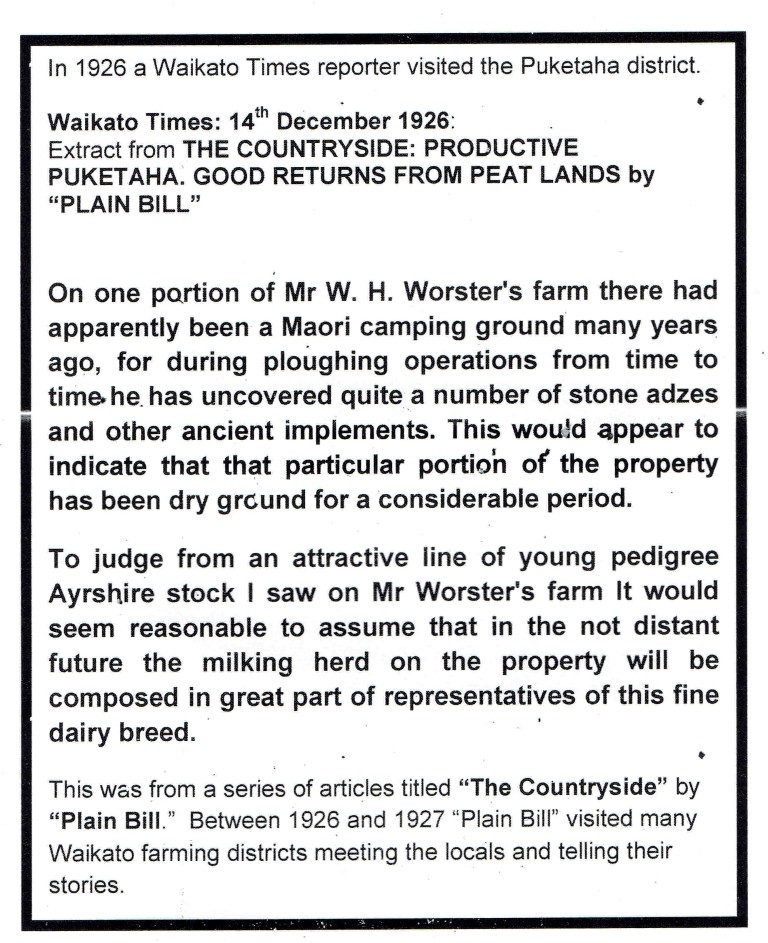PUKETAHA: THE FAMILIES AND THEIR STORIES
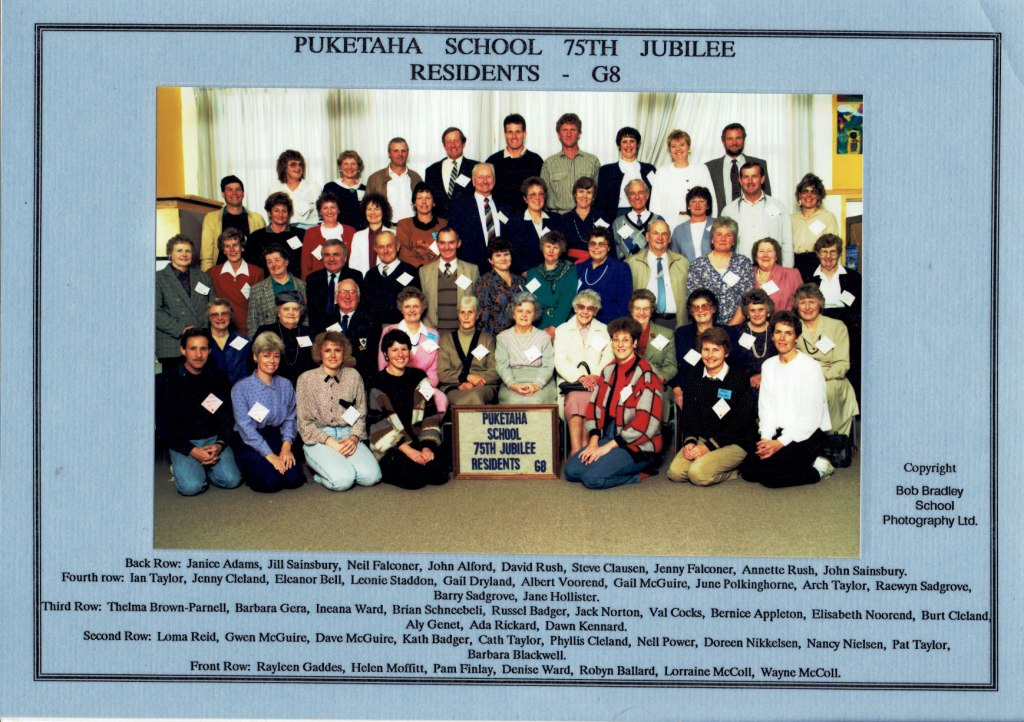
(NOTE: In 2022 Greenhill Road's name was changed to Pukeroa Road)
Dan Barry
(Corner of Puketaha & Sainsbury Roads)
Dan Barry left his Irish homeland in the 1870s to make a better living in the gold mines of Australia. This didn't quite eventuate, so he came on to New Zealand. Amongst the odd jobs that he did was driving a mob of cattle from Auckland to Wellington. He settled in Taranaki and became one of the entrepreneurs of his era. He dealt in cattle and bought and sold land, hotels and racehorses.
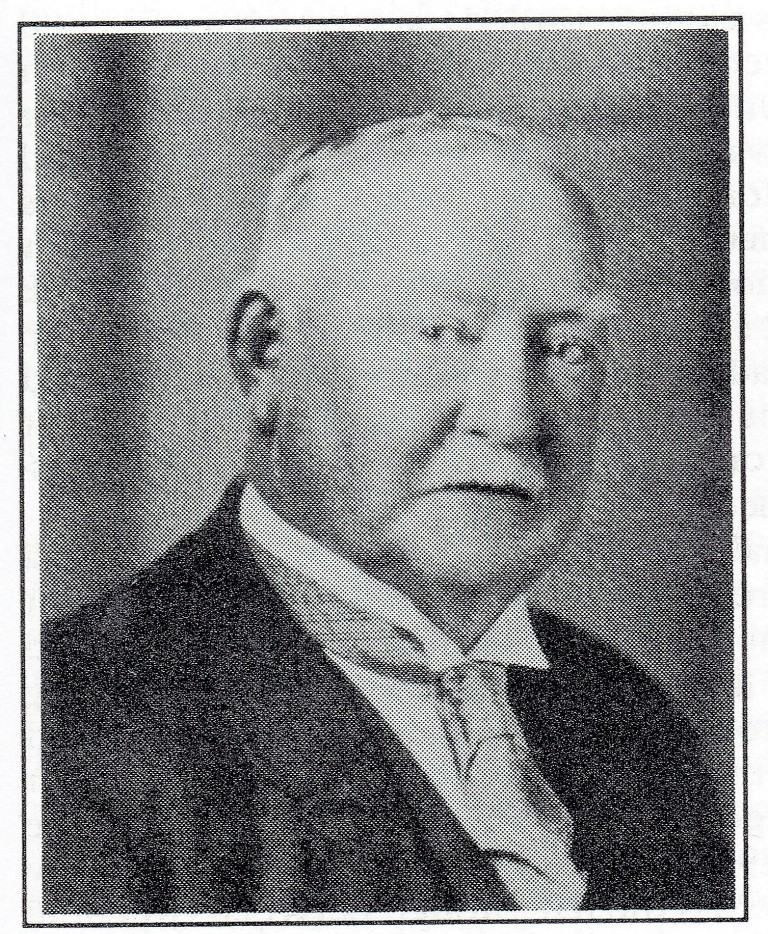
He was attracted by the Waikato and on 21 November 1919 bought 715 acres from James Taylor for 28,600 pounds — about 40 pounds per acres, a pretty considerable sum for those days (equivalent of nearly $6,000 per acre in today's terms). This land contained the Puketaha School property and was bordered by what are now Sainsbury and Puketaha roads.
According to his son Jack Barry, Dan Barry was financially embarrassed by the purchase but as often happened "he had the breeze with him" because after the sale James Taylor went looking for another farm and when he couldn't find anything suitable he bought back 287 acres for 16,035 pounds — a price of 56 pounds per acre — September 1920.
He also sold all the remaining land — although whether this was because he needed the money or was part of his dealing operations is not known. On I September 1920 he sold 81 acres along from the present Puketaha Hall to Nils Cornelius Strid and 346 acres fronting the present Sainsbury Road to George Vercoe. The total purchase price was about 50 pounds/acre so Dan made a tidy little capital gain of about 7,000 pounds in one year, although this and some extra was left as a mortgage to George Vercoe.
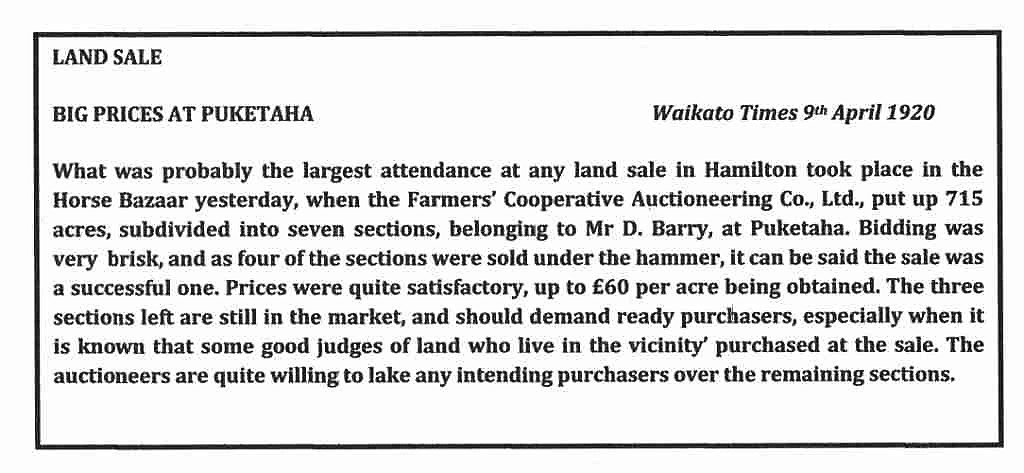
George Vercoe during this period was also farming a property at Piarere and developing his stock and station business. He had a herd of Shorthorns which were sharemilked for him on Sainsbury Road by Walter Powell - a lively lad who had come out from Wales and got off the ship in New Zealand when he had lost his money gambling.
Unfortunately for George Vercoe, the slump in the early 1930s caused him financial problems and in order to retain his stock and station business and the Piarere property, he gave the 346 acres on Sainsbury Road to the Barry Estate, supervised by the Public Trust, in exchange for the outstanding principal mortgage sum. At that time (July 1932) the property was valued at 8765 pounds or 25 pounds/acre.

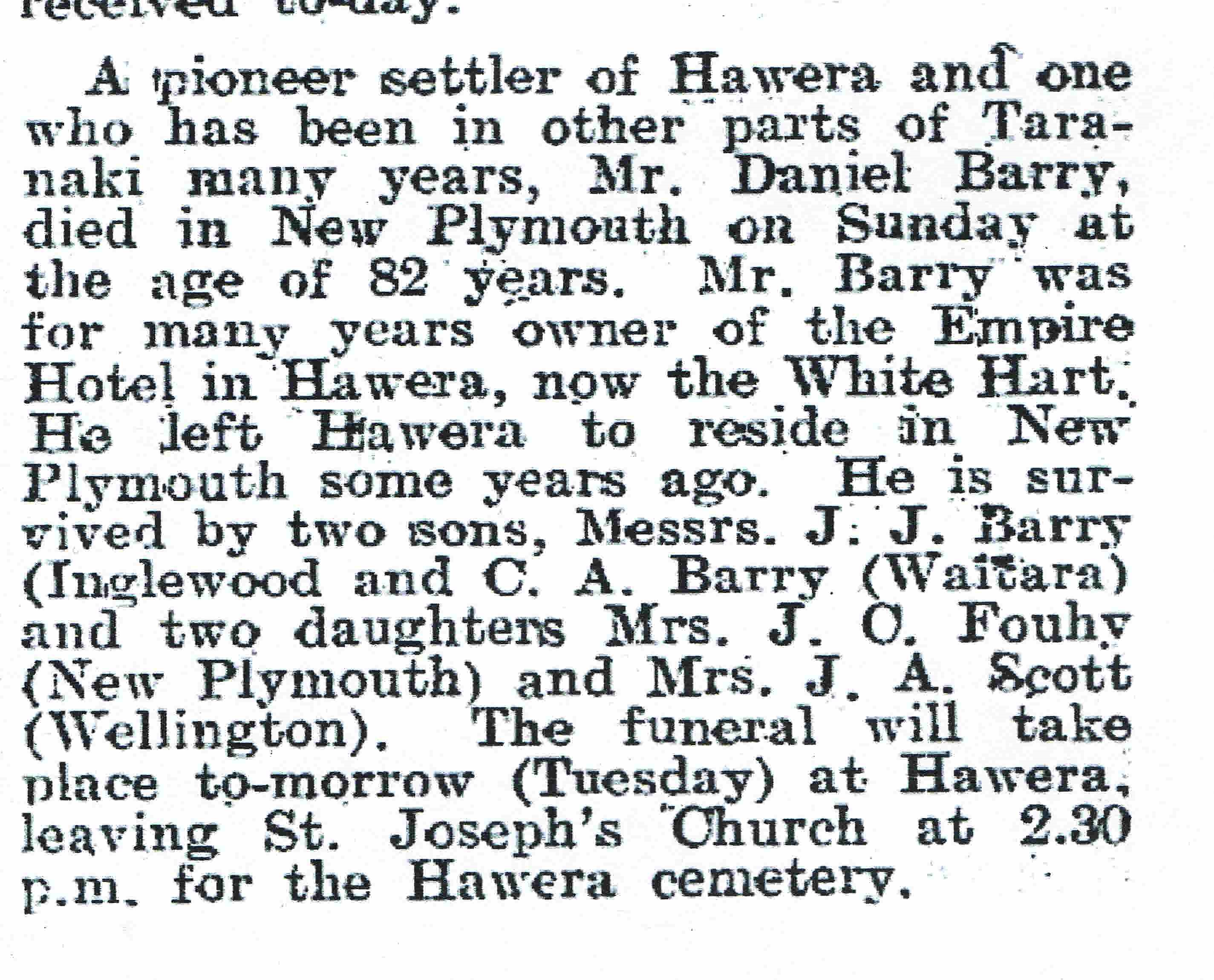
Dan Barry died in March 1932 and when the land was returned to the Barry Estate, it was administered by Dan's children who employed sharemilkers; and it is interesting that only sharemilkers have farmed the property to this present day. Some of the early sharemilkers were the Shute, Mayall and Wooller families.
This story has been copied from the 1991 Puketaha School anniversary booklet
___________________________________________________________________________________
Bogun Family
(Puketaha Road)
C.W. & P.F. Bogun and Family
E.G. BOGUN - CARTAGE CONTRACTOR
PUKETAHA TRANSPORT
In 1926 C.W. Bogun bought land in Puketaha previously owned by George Gilling (1912-1920), Maurice Thompson (1920-1921) and Edmund Somerville (1921-1926), this land having frontage to Puketaha Road and Sainsbury Road. The corner site was taken in 1913 from the original block of land and used as a "creamery". Mr. Edwin Thomas purchased the creamery site in 1943. After the creamery ceased operation the Manager's house was used by school teachers — Mr Edgar from 1917-1920 and Mrs Hoskin 1921-1922. A school house was built in 1923. Mr & Mrs Eustage and family then occupied the manager's house.

The block purchased by C.W. Bogun and his family-Mabel, Ernest, Oswald and Grace —was sold in 1947 to Eric Mikkelsen and Mr & Mrs C.W. Bogun retired to Hamilton. During this time they had taken in boarders, two of them being Jock Kelly from Scotland, and Norman Young from England, who at one time had the Piako Road cream contract.
In 1930 Gordon Douglas purchased land adjoining the Bogun farm on Sainsbury Road and married Mabel Bogun. That farm was sold to Mr & Mrs Bolt in 1957 and in 1971 to Eric Mikkelsen. Oswald married and moved to Hamilton and Grace married Norman Cotter, a farmer of Cambridge.
In the late 1920s Ernie and Ossie helped dig drains on the Seddon block. In 1930 Ernie took over the cream contract previously operated by Messrs. George Gilling (who used a Model T Ford), George Thrupp, Jack Desmond, Fred Ladd and Mr Lilly. He purchased a new 1931 Chev truck, and gradually increased the scope of cartage. After the empty cream cans were returned from the Frankton butter factory to the cream stands located on the road side, he did general cartage and carted the majority of the fertilizer to the Seddon Block from 1932 onwards.
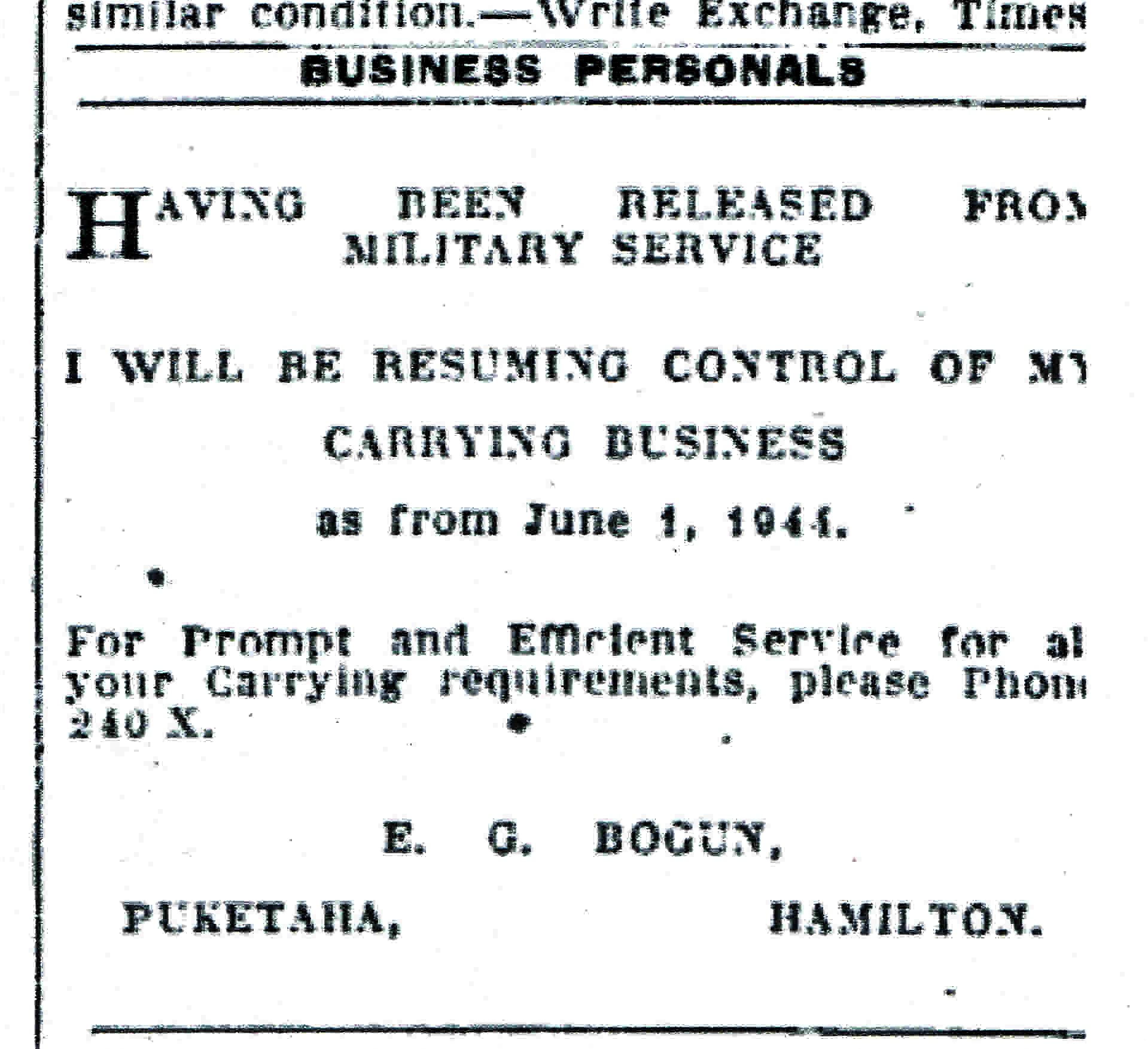
Many farmers turned to whole milk and to begin with this was carted to either the Rototuna or Gordonton factories by the farmers. Ernie then began collecting milk from road-side stands while also continuing the cream contract. Many farmers continued on cream until milk tankers commenced collection in the early 1950s
The truck depot was situated on the Bogun farm approx. 100 metres from the culvert and drain near the south west corner, and on the small rise in Puketaha about 1 kilometre from Sainsbury Road corner. This depot had two truck bays, with a loading platform between, on which a small stock of coal and fertilizer was stored; and there was a small workshop area beside one of the truck bays. Petrol pumps were also installed. A preventative measure against crime was a burglar alarm in the depot which sounded in the house. Quick phone calls would be made to Clarence Thomas on the corner of Puketaha Road and Sainsbury Road, and Jim Thompson 300 metres west on Puketaha Road, who placed vehicles across the road to impede escape. Ernie, a very keen and accurate shooter, would then approach the prospective thieves who always fled rapidly and always managed to avoid being caught. Word must have passed between the would-be thieves as we did not have much pilfering.
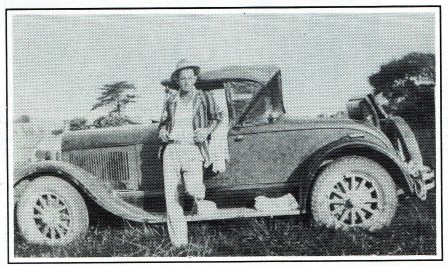
The nearest cartage opposition was at Gordonton and at Richards Garage near the school in Insoll Avenue, Hamilton. Ernie increased his fleet of trucks to three and in the latter years had a replacement programme of one new truck each year. These included Fargo, Dodge, Reo and later Bedford trucks. He was one of the first carriers to introduce stock crates to cart animals in; prior to this all stock was moved by road and drovers. This introduction greatly assisted the farming community. In season bobby calves were collected and I can remember being absent from school to assist with the docket writing. Stock was also carted to Westfield and the local works. Some farmers knew it was time to get up in the morning when they heard Ernie go past to collect fertilizer from South Auckland. Claudelands and Frankton Railway stations were also well frequented places to collect coal, timber, wire and all supplies associated with farming. Metal supplies came mainly from Tauhei and Tauwhare.
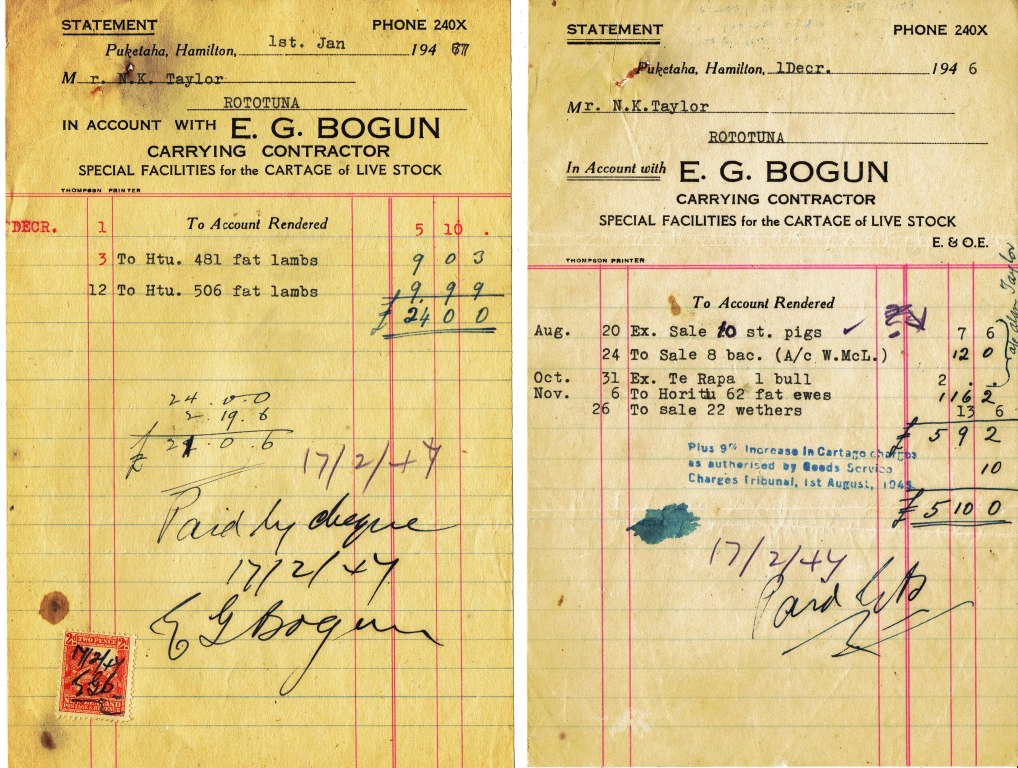
Some of the men employed were Ossie Bogun, Syd Worster (part time only), Mery Thompson (who lived in a cottage on the Bogun farm), Don Tarver and Happy (Francis) Sadd. Lorna Thompson used to assist Rita with the bookkeeping side of the business.
Ernie, one of the top table tennis players, also used his trucks to transport table tennis team members to interclub matches. Each person was charged V- (one shilling) and all community singing and hilarity had to cease as they approached the southern end of town where the local constabulary was located, as he did not have a passenger licence.
E.G. Bogun, Cartage Contractor for over 22 years, sold his three licences in mid-1952 to Puketaha Transport, the partners being Hugh Schneebeli, Syd Worster and Syd Mac Donald. A new depot was established on the corner of Puketaha and Gordonton Roads, this land previously being part of the Schneebeli farm. Jack Norton purchased Syd Worster's share in September 1953 and shortly after Syd MacDonald relinquished his share. In the late 1950s Peter van der Ham and Terry & Bruce Hunwick became partners. During this time the number of licences had increased to eight. In 1967 Eddie Chibnall purchased the business and during his term of ownership had the biggest bobby calf contract in the Waikato. Petrol was only 8 cents a litre in 1967. In 1977 he sold to Steve Ranger who continued for another 6 months. One licence sold to Noel Miers of Woodlands Road and two licences went to T. & G. Davis of Cambridge. These licences were later revoked due to supposed lack of work. Gordon Edwards then had the licences reinstated and found more work than he could cope with and still continues this much needed service to the district and surrounding areas.
Hugh Schneebeli built his house and service station on half an acre of land and in 1962-1963 an extra quarter acres was acquired and the butcher and grocer shop established. Ralph Jensen, previously Puketaha School teacher (1962), was one of the lessees. The shops finally closed down in 1974. This building is now used by a joiner.
In July 1932, Mr & Mrs W.H. Shute and family moved from Gisborne to the Barry Estate land on Sainsbury Road. Their daughter, Rita married Ernie Bogun in 1938 and on half an acre of land between a large drain and the Bogun farm boundary their original home, which cost just over 900 pounds, was built. Ernie bought a new Chrysler sedan from Valentine and Foreman for 434 pounds in April 1937 and this was used as their wedding car and also for many other weddings. This car was sold in 1964.
Both Ernie and Rita were very involved in the community, both being keen and good tennis and table tennis players and both playing bowls with Rita receiving life membership. Ernie was a school committee member. Rita used to transport school pupils to various functions including swimming to the Fairfield Primary School, sports days at Gordonton Domain and to any other activities as needed. Rita was also involved with the Country Women's Institute and both assisted with fund-raising events for the Hall. She was also a member of the 1966 School and District 50th Jubilee Committee.

This story has been copied from the 1991 Puketaha School anniversary booklet
____________________________________________________________________________________________
The Capper Family
(Reid Road)
Irwin and Frances Capper and their three children, Brian (Joe), Suzanne & Elizabeth, moved to Reid Road at Puketaha in 1951 where they bought 174 acres from Ross Platt for 1700 pounds. The block was swamp and ti-tree on deep peat.
They transported from Waihi a small cottage which was put on the side of the road, 200 yards from their property. It was 3 years before they could form a track solid enough to shift the house onto their farm. As their house had no power, a tilly lamp was used for lighting, a coal range for cooking and a copper was used for heating the water for washing and baths. The laundry was done by hand with a wash board and hand wringer.
Affectionately known as Cap and Mrs Cap, they plodded along on a very limited budget, cutting ti-tree by hand to clear the land for agriculture until they could afford to buy their first tractor, a E27N Fordson Major for 317 pounds in 1952. The ti-tree was crushed with the steel wheels of the tractor then burnt off. It wasn't unusual to get stuck in large peat holes, with only the nose of the tractor above ground. Railway sleepers had to be dug down under the back of the tractor to keep it from sinking further into the peat, until a crawler could be brought in to pull it out. On one of these occasions it took 52 hours to get the tractor out as it kept sinking.
In 1952 Irwin with the help of Fred Gerome formed Reid Road. A small 2 bail cowshed was built in which 12 cows were milked by hand. The cows had a free run of the farm which was still in dense bush and Mack the dog did a good job of rounding them all up at milking time.
Frances, as well as looking after the family and house, would milk the cows while Irwin went out contracting for extra income. The first topdresser was a 5 bag one (1/4 ton) on the back of a trailer. He then progressed to a 1 ton topdresser that he loaded by hand until he bought a loader tractor. The business grew over the years with sons Joe and Trevor helping out. Also the daughters were very capable of lending a hand too when needed. From one 1 ton bin and tractor they soon increased to 3 & 4 tractors and bins spreading hundreds of tons of lime and manure a year. As well as spreading fertilizer the business by 1965 included doing all cultivation work and haymaking with a fleet of Nuffield and Leyland tractors.
A bigger cowshed was built in which they milked 80 cows, separating the milk. The cream was picked up by Morrinsville Dairy factory and the skim milk was fed to calves and pigs.
As the family grew, a bigger house was needed. Four more children had been added to the family (Lynn, Evelyn, Pauline & Trevor). So in 1960 a house was purchased on Tramway Road for 100 pounds and shifted to Reid Road and after spending 246 pounds it was ready to live in. That house is still the family home today. With plenty of space, love and happiness, the children all attended Puketaha School and Fairfield College. They walked one & a half miles home each night as the bus didn't go down Reid Road. Their father would drive them to school most mornings in his 1938 Chev. In 1976 Cap, Joe and Trevor made the news by spreading 250 tonnes of lime over 500 acres in 10 hours on Falconers' farm, Telephone Road.
Irwin Capper passed away 1980 and Brian (Joe) took over the contracting business, employing labour. Joe and Norma run the dairy farm with Suzanne's help. In 1982 Joe and Norma moved a second house onto the farm where they live with their family.
Frances Capper passed away September 1991 and Suzanne continues to live in the family home.
Lynn Vercoe (nee Capper)
This story has been copied from the 1991 Puketaha School anniversary booklet
____________________________________________________________________________________________
Chapman Family
(Telephone & Puketaha Roads)
(more to come!)
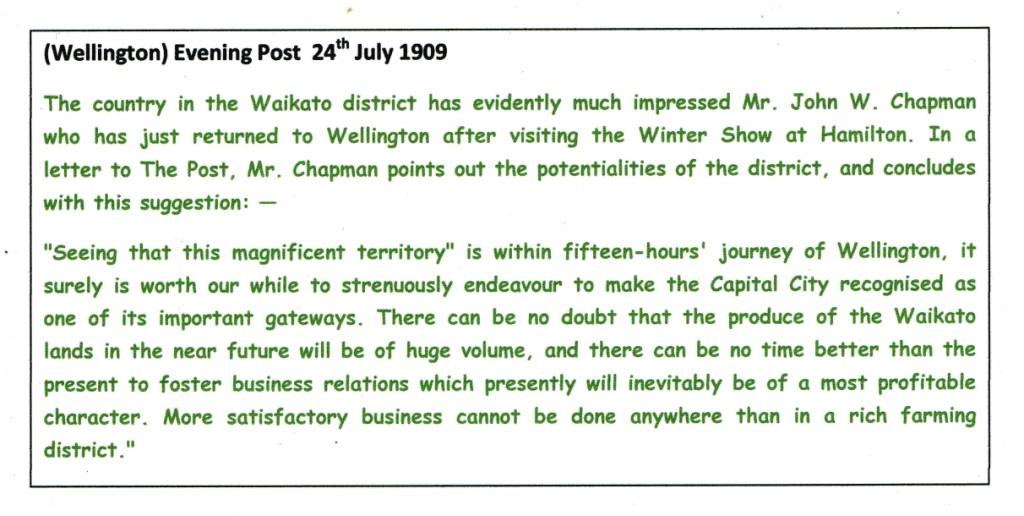
_____________________________________________________________
Cleland Family
(Sainsbury & Gordonton Roads)
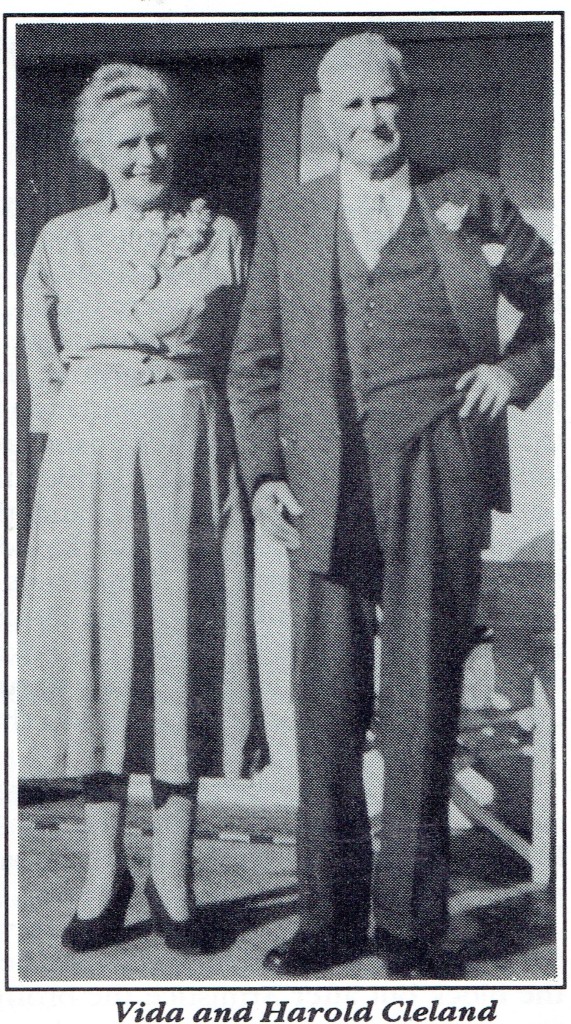 In 1920 Harold Cleland and his wife Vida arrived in the Waikato from their farming operation in Toko near Stratford, Taranaki. They purchased 597 acres from James Taylor who had owned all the land bounded by the Gordonton Road south of the N K Taylor property, Sainsbury Road, and Puketaha Road as far north as the N K Taylor property again. This land had been a grant to a Dr. Peirce in 1864, sold to Vere de Vere Hunt and again sold to NZ Loan and Mercantile Agency in 1876. In 1902 it was sold to James Taylor who farmed it until 1920 when it was bought by Harold & Vida and their family of 3 sons and 1 daughter, Sefton, Dudley, Burt and Sybil.
In 1920 Harold Cleland and his wife Vida arrived in the Waikato from their farming operation in Toko near Stratford, Taranaki. They purchased 597 acres from James Taylor who had owned all the land bounded by the Gordonton Road south of the N K Taylor property, Sainsbury Road, and Puketaha Road as far north as the N K Taylor property again. This land had been a grant to a Dr. Peirce in 1864, sold to Vere de Vere Hunt and again sold to NZ Loan and Mercantile Agency in 1876. In 1902 it was sold to James Taylor who farmed it until 1920 when it was bought by Harold & Vida and their family of 3 sons and 1 daughter, Sefton, Dudley, Burt and Sybil.
The original total holding was quite liberally covered with Kahikatea and also had an unusually large Kauri tree, reputed to be the largest Kauri south of Auckland. The land farmed as a dry stock unit originally (approximately 2 years) and then the two sheds that were already on the farm were brought into operation and 130-140 cows were milked in each. Subsequently it was subdivided and taken over by the three sons, Sefton on the Gordonton end, Dudley on the corner of Gordonton and Sainsbury Roads and Burt on Sainsbury Road. One of the interesting occupations that were required in all rural areas was getting cattle in to the sales. This was a job that Burt took on and for some years, each week or on sale days, he accumulated and drove sometimes reluctant animals to the Frankton Sale.
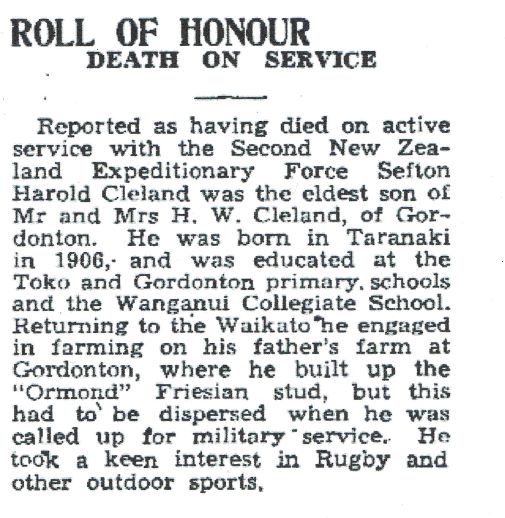
Burt's house and shed were built in 1934 where he has continued dairying until the present time. The development of the farm was an on-going exercise that was helped in the early days by the application of fertilizer, with lime later becoming a recognised requirement for sweetening soil. Trace elements were added and this, together with extensive drainage programme and finally the laying of a comprehensive tile drain system resulted in the present property's vitality and beauty.
All the members of the Cleland family are still interested in the Puketaha area and the progress that has been made. It is very pleasing to see how the educational area has developed from just a small school of about 20 pupils in about the year 1948 to such a progressive centre today, producing successful young people who go on to a variety of occupations. When the Cleland family went to school they rode horses and bikes or walked along a very rough and narrow metal road which was bordered by high trees which made it very cold in the winter. An added complication was one Shetland pony that didn't always want to complete the trip and would sit down on the way.
Sefton Cleland was killed on active service in 1944. Dudley some years ago purchased a large block of land at Glen Massey on which he lived for some time but returned to live on his original farm where he died in 1983. His wife Lilian still lives on the Gordonton Road property and their youngest son Dudley farms the land.

The area on Sainsbury Road has been farmed by Burt since 1934, and he married Phyllis Parfitt from nearby Gordonton in 1938. Their family of five — Ngaire, George, Harold, Tom and Barbara, all attended the local school until they were old enough for Hamilton schools. Later George and Tom went to Taranaki and farmed there for about 14 years before returning to the Waikato to carry on farming at Ohaupo and Te Awamutu. Ngaire married and went to live in Taranaki also at Lepperton. Harold and Barbara (Mrs John Afford) are still living in Puketaha also farming but with many other interests as well. MI are interested in sports especially tennis and rugby.
Phyllis and Burt have 19 grandchildren and four great grandchildren. Several grandchildren are farming including David and Andrew, sons of Harold, who have now taken over a large part of the property where their great grandparents farmed on Gordonton Road. Greg Alford has played rugby for Waikato in the under 14 age group this year (1991).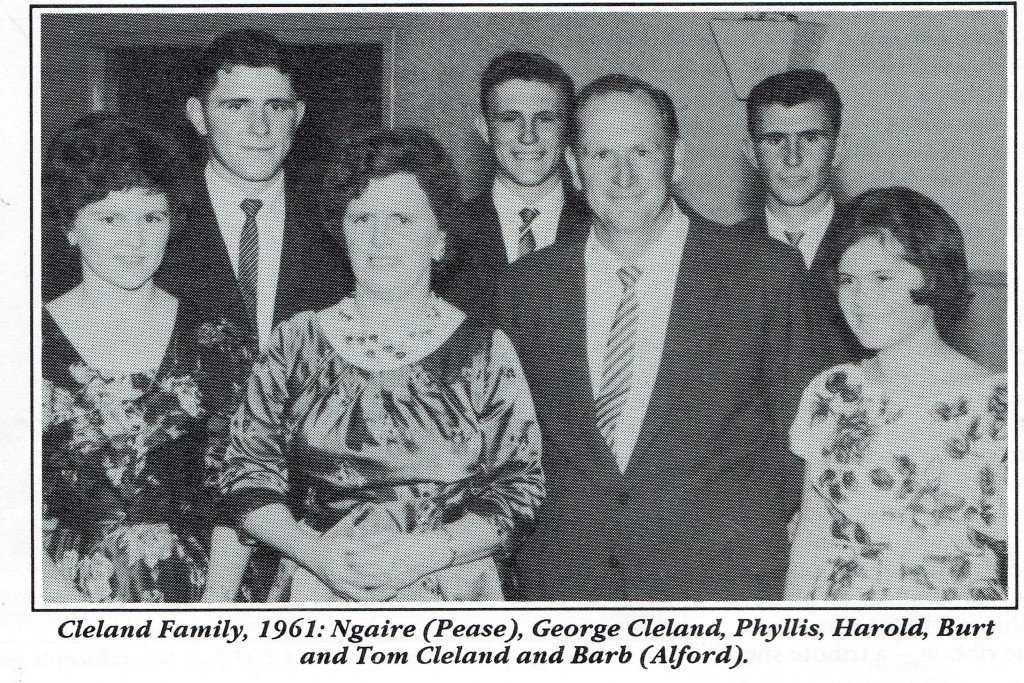
All the members of the Cleland family are still interested in the Puketaha area and the progress that has been made. It is very pleasing to see how the educational area has developed from just a small school of about 20 pupils in about the year 1948 to such a progressive centre today, producing successful young people who go on to a variety of occupations. When the Cleland family went to school they rode horses and bikes or walked along a very rough and narrow metal road which was bordered by high trees which made it very cold in the winter. An added complication was one Shetland pony that didn't always want to complete the trip and would sit down on the way.
Dave McGuire, from conversations with Burt Cleland (1991)
This story has been copied from the 1991 Puketaha School anniversary booklet
____________________________________________________________________________________________
Finlay Family
(Puketaha & Greenhill Roads)
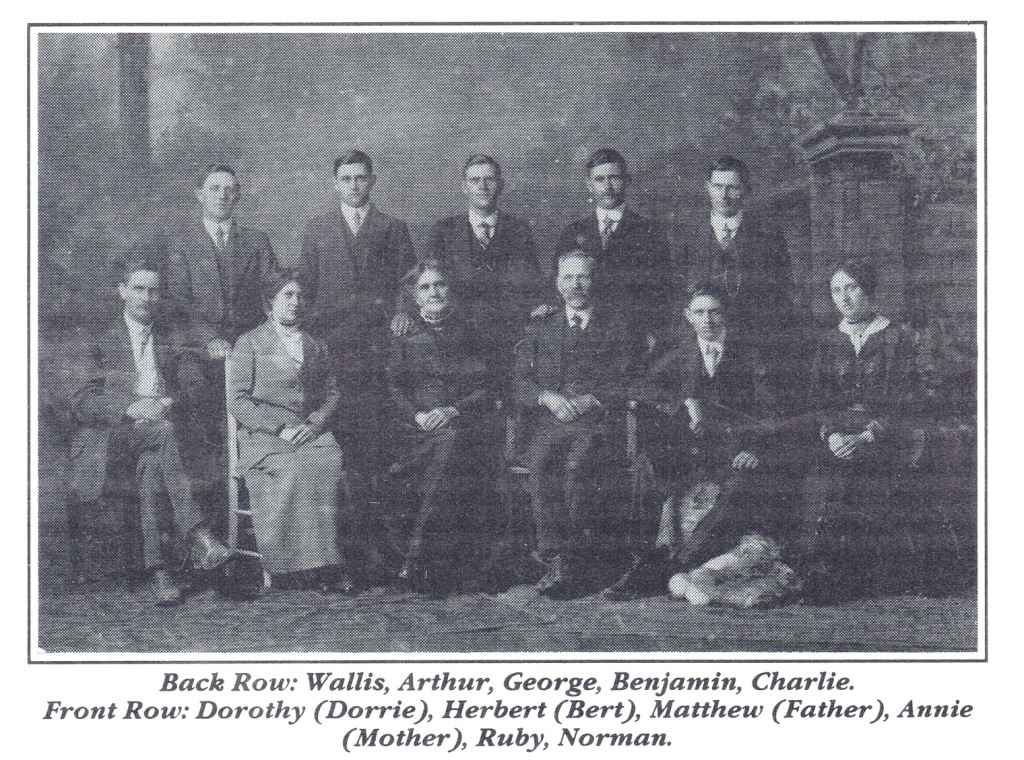
In 1856 Matthew Finlay was born in Canada and at the age of 12 years settled in New Zealand. After his marriage to Annie Bregman they farmed at Shaftsbury near Te Aroha for 13 years. In 1914 they purchased a property of 1050 acres on Puketaha Road which included Arthur Finlay's property, Burton Trust property and Barry Ward's property. The Homestead (still in use) was built while they lived in Te Aroha Street, Claude-lands and in 1916 they shifted to the new house. The only grass on the property was the road frontage of the 3 farms, about 100 acres in all. The remaining 900 acres extending back to Greenhill Road and beyond consisted of tall ti-trees, huge stumps, rushes and peat swamp.
Many were the stories of looking for cattle in the peat fog: as the fences were non-existent and cattle would wander up as far as Telephone Road. The original method of stumping was to hitch a team of horses to stumps, place a charge of "gelly" under the stump and light the fuse - a method not recommended today as it tended to make the horses "nervous". Today this land, after much draining etc, produces maize, potatoes, cabbages, cauliflowers, trees, dairy and dry stock, sheep etc.
To provide work for the unemployed in 1934 a Public Works camp was developed in the corner paddock opposite Archie Wilson's house. The Taupiri Drainage Board supplied the work, mostly digging the drains in the district with shovels and wheelbarrows.
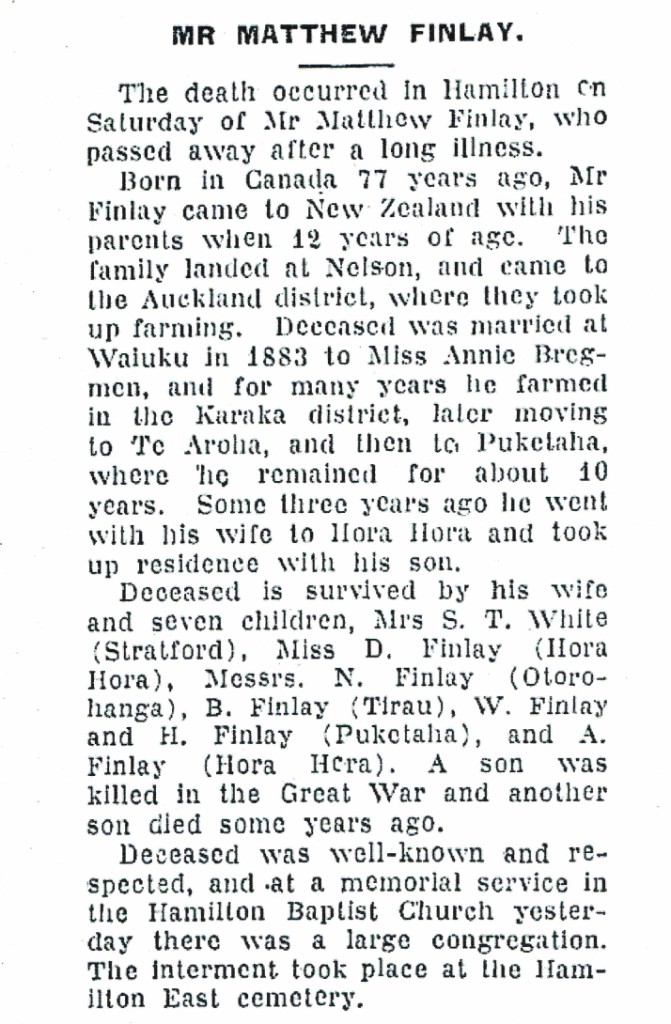
The Finlays had the first tractor in the district: "A Samson" with steel wheels and all. It finished its life on a logging tramline.
For many years, owing to the swampy nature of the farm, good water was hard to find, until a bore was sunk on the hill by Barry Ward's home in 1924. Many were the cream-can loads of water that were collected, especially in the summer, by other residents of the district.
Matthew and Annie had seven sons and 2 daughters Charlie, Norman, Benjamin, Wallis, Herbert, Arthur and George (killed in 1st World War), Dorothy (Dorrie) and Ruby.
In 1929 the Homestead farm was sold to Henry Bell and is now owned by Burton Trust. Arthur Finlay, a grandson, farms one side, the hill property on the other side is owned by Barry Ward, a great grandson, and the back half bordering Greenhill Road is farmed by Gordon Finlay, another grandson (Wallis's son).
Early in 1960 the district was on the news when oil was drilled at the back of Arthur Finlay's farm off Greenhill Road. The noise was unbelievable with drills going day and night. Unfortunately, or shall I say fortunately, the whole exercise came to an end and to this day no-one is sure why or what exactly happened.
Matthew Finlay died in 1933 and his wife Annie in 1948.
Inewa Ward (nee Finlay) Granddaughter
Drilling for Oil at Puketaha
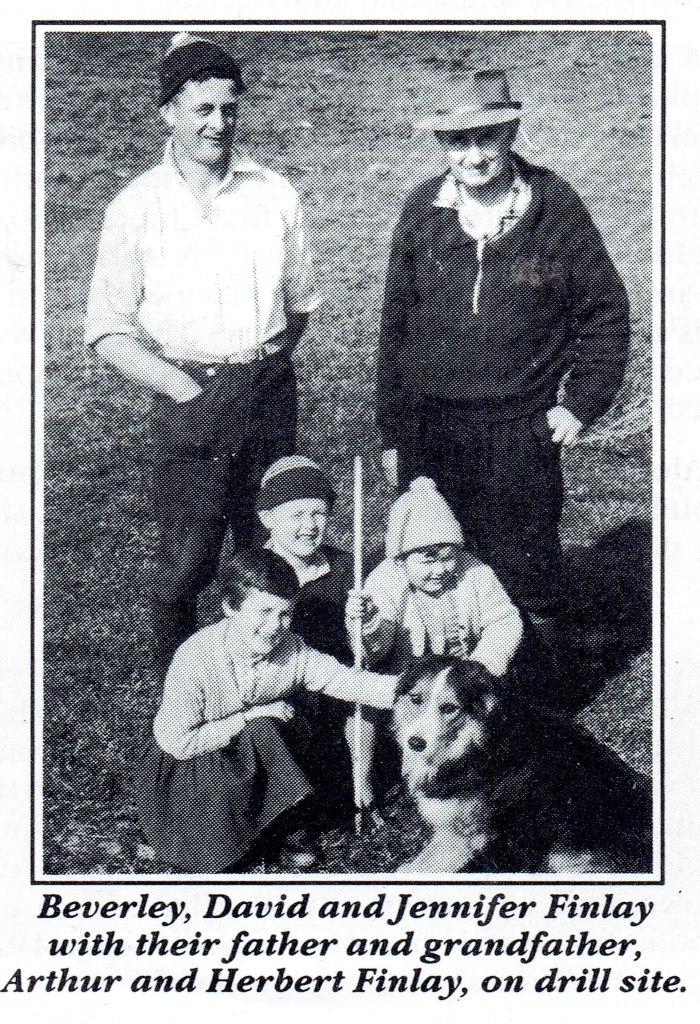 October 1963 saw great excitement in Puketaha as a 145 foot oil derrick was put into position. There was anxious moments as the 68 ton rig swayed dangerously at a 45 degree angle. Watched by a crowd of people with cameras, a giant pulley powered by the 500 and 250 horse-power motors lifted the 135ft cantilever mast from its horizontal position on the ground. There was also a risk that the rig would sink through the metalled pad into soft peat.
October 1963 saw great excitement in Puketaha as a 145 foot oil derrick was put into position. There was anxious moments as the 68 ton rig swayed dangerously at a 45 degree angle. Watched by a crowd of people with cameras, a giant pulley powered by the 500 and 250 horse-power motors lifted the 135ft cantilever mast from its horizontal position on the ground. There was also a risk that the rig would sink through the metalled pad into soft peat.
At least 5000 people visited the oil site on Mr Finlay's property on Greenhill Road. Traffic was so heavy along the unsealed road that a heavy water lorry endeavouring to keep the dust down tipped over on its side when it was forced off the road by the stream of cars.
Drilling lasted only 10 days, then the bore was abandoned and the excitement was over. There is only a small concrete pad left as evidence of the venture that failed.
(Extract taken from newspaper clippings)
These stories have been copied from the 1991 Puketaha School anniversary booklet
___________________________________________________________________________________
McCarthy, John Michael (1872-1917)
More to come!

McGuire
Puketaha Motors/Transport
Rickard Family
(Puketaha and Greenhill Roads)
Hannibal Rickard, of Cornish descent, came from Stratford, Taranaki. He had a family of six boys and four girls, two of those, a boy and a girl, dying early in life.
In 1912 Hannibal Rickard bought a block of land comprising between three and four hundred acres on the town end of Puketaha Road, then owned by Mr Parlane. This adjoined the property of Mr Holdaway on the corner of Puketaha and Tramway Roads.
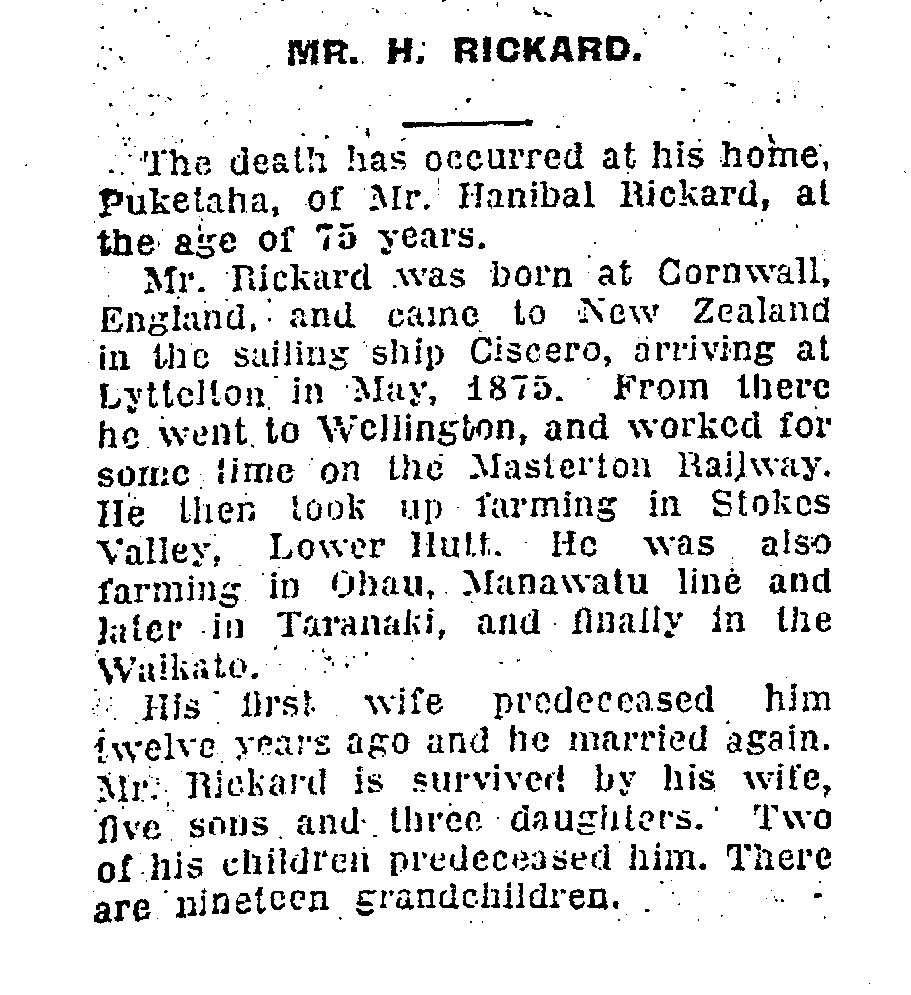
Later, in 1919, he bought a block of land on the other side of the road, bounding on Puketaha and Tramway roads, an area of 137 acres. The whole area was used for mixed farming. A brother of Hannibal's, Charlie Rickard, bought an area of five hundred acres in Greenhill Road. In 1931, when Hannibal died, the land was subdivided into four farms, four of the sons, Albert, Walter, Ernest and Percy getting one each.
Two of the girls, Mary and Annie who married two brothers, Tony and George Gera, were in some way involved in two farms across the road, now owned by Malcolm Macdonald and Glen Taylor respectively. The other farms all have new owners.
I bought my father's farm, selling it in 1982, but retaining our home and three-quarters of an acre. The homestead farm is the only farm remaining in the family; it is owned and occupied by Percy's daughter, Alma Christensen.
Percy Rickard (Son of Hannibal Rickard)
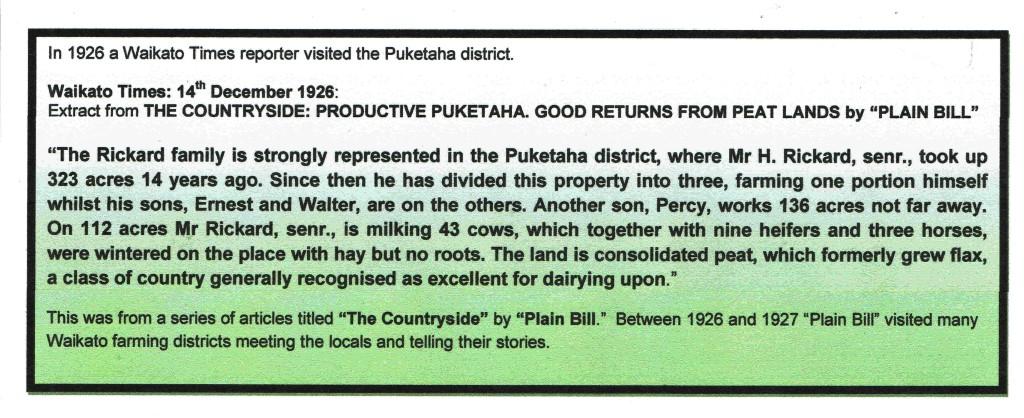
This story has been copied from the 1991 Puketaha School anniversary booklet
----------------------------------------------------------------------------------------------------------------------------------------------------------
Sainsbury Family
(Sainsbury Road)
Thomas Sainsbury and his young wife left Lydnoy, Gloustershire and emigrated to New Zealand in 1870, taking up residence in Kaipara Flats. It was here that their two sons Denby and John were born.
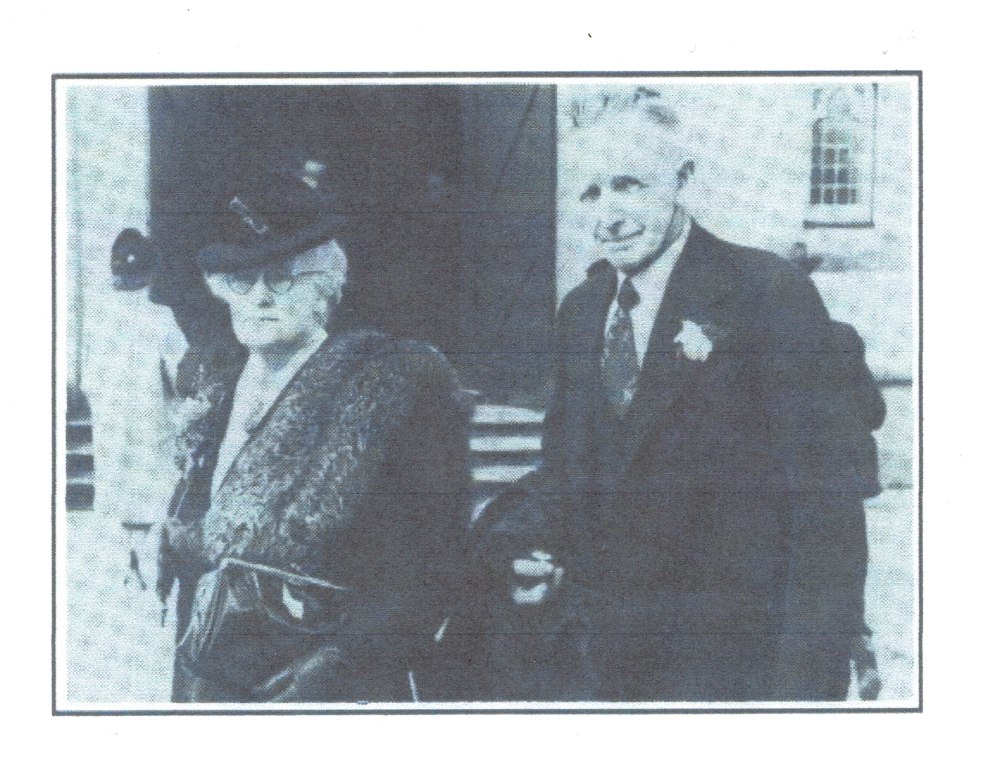
As young men they worked as undercutters in a bush felling gang, and here learnt to identify and respect native timbers. With Government induced breaking up of the large estates Denby and John came to the Waikato, first looking at the Matamata Plains, which they considered to be too poor to support them, and the prolific rabbit population. Eventually they purchased a blackberry and kahikatea swamp from the Woodlands Estate. This land was on Bush Road Puketaha, later, about 1937, designated as Sainsbury Road in the district of Puketaha. As must be the case with any enterprise likely to succeed, hard work and long hours were no strangers to these young men in 1907 and following years.
Denby Sainsbury married Winifred Brown in 1912, and started to establish a home on the site of the present house on Sainsbury Road. About the same time the large plane tree was planted at the gateway of the farm.
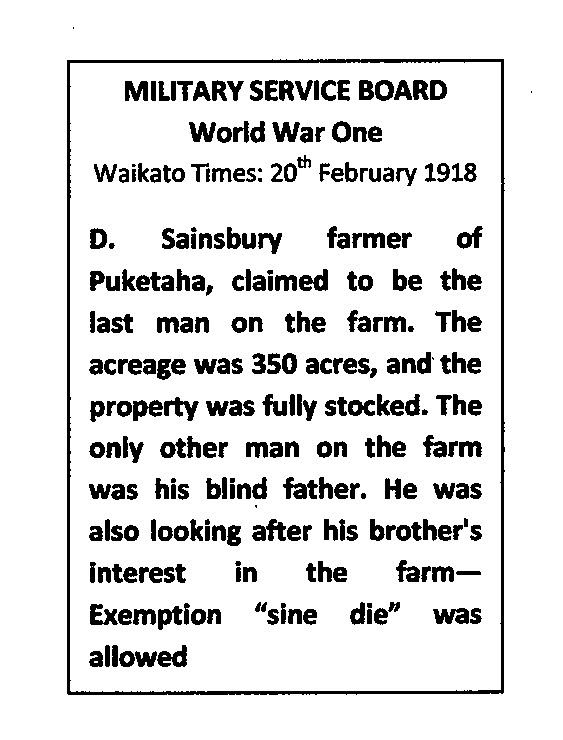 During World War I John served in Egypt and Mesopotamia while Denby, with the help of his wife, ran the block but after Armistice the brothers turned it into two separate farms and each went his own way.
During World War I John served in Egypt and Mesopotamia while Denby, with the help of his wife, ran the block but after Armistice the brothers turned it into two separate farms and each went his own way.
At first milk was taken by horse and wagon to the Gordonton Factory but later a creamery was built on the corner of Sainsbury Road and Puketaha Road opposite the school. Here the whole milk was separated, the cream carted to Frankton Butter Factory, and the skim taken home to feed to calves and pigs.
With the advent of home separation one had only to deliver the cream to a roadside stand. My first memory of a cartage contractor was a Mr Desmond and at a later date the Bogun Bros. With the advent of a school and school house (burnt and replaced around 1931) a creamery and managers house, as well as two houses across the road, it looked as if a village was in the making, but this was not to be.
Accounts of district pioneers rarely give credit to the distaff partner. In the creating of this farm Winifred ploughed and worked the ground with the horses for swedes and mangels for cattle feed while Denby dug the drains. She milked, as many women did at this time and, by today's standards, in most primitive conditions. Before electricity came to the district the purchase of a kerosene motor was a boon in the cowshed, even if it could be the most temperamental and frustrating thing to start.
Every cloud has its brighter spots, so too with work. Winifred played tennis at Puketaha and Gordonton and for many years croquet at several homes around the district. Being an original resident she was ready to help with district activities.
The school was used for social activities: table tennis in winter, and the occasional dance, while in summer there was tennis. Church was held nearly every Sunday and rarely did Winifred miss attending right up to the 1950's A local hall had long been mooted for the district. Prior to World War II fund-raising for this has been started but it was not until the 50's that the project came to fruition. At the opening of the hall Winifred (with her two grandsons John and Ross) was asked to officially cut the ribbon — a tribute she very much appreciated.
Denby served on the school committee and was instrumental in organising swimming lessons through the autumn months at Whitiora School baths and later at Hamilton Municipal Baths. For those of us at school at this period Wednesdays were red letter days. During my time at school we experienced the fluctuations of a small country school, wavering between sole charge and two teachers. To get a football team to play Gordonton we had to amalgamate with the now defunct Piako Road School.
As both Denby and Winifred enjoyed riding, Stuart, the only son, was riding at an early age and all through his primary years he rode to school. He was also on the road after school on Mondays helping gather cattle from around the district to go to Frankton Sale early Tuesday morning before school. It seems a little odd now but the only stock route was over the old traffic bridge past the police station, along Clarence Street and down Lake Road. It was not until 1937 that the Fairfield Bridge was opened.
A little incident from this period — we were taking a mob of bulls to the sale, and going up Clarence Street. The Anglican Bishop had omitted to close his gate and the bulls decided to investigate Bishops Court. It is fair to say that the owner's comments were lacking in religious flavour.
As happens to all of us Anno Domini caught up with Winifred and Denby and they are now in Gordonton Cemetery, the final resting place of two pioneers of Puketaha. Today Sainsbury descendants still reside on Sainsbury Road taking part in the activities of the district, and another generation attends a much enlarged school.
Stuart Sainsbury (son of Winifred and Denby Sainsbury)
This story has been copied from the 1991 Puketaha School anniversary booklet
____________________________________________________________________________________________
Seddon Family
(Puketaha & Telephone Roads)
(Note: Seddon Rd was not formed until after WW2)
Samuel Thomas Seddon was born in 1830 and arrived in New Zealand in 1859 on the ship "Excelsior" and had 2 sons and 1 daughter and settled in Howick. His name was mentioned several times in the journals of Vicesmus Lush (1850-1863) e.g. "The Churchwarden Mr Seddon highly commended the decorations Dec. 25 1860 and again August 2 1863 "Our stockade is nearly finished and when it is completed Mrs Peacocke and Mrs Seddon intend to have their children back".
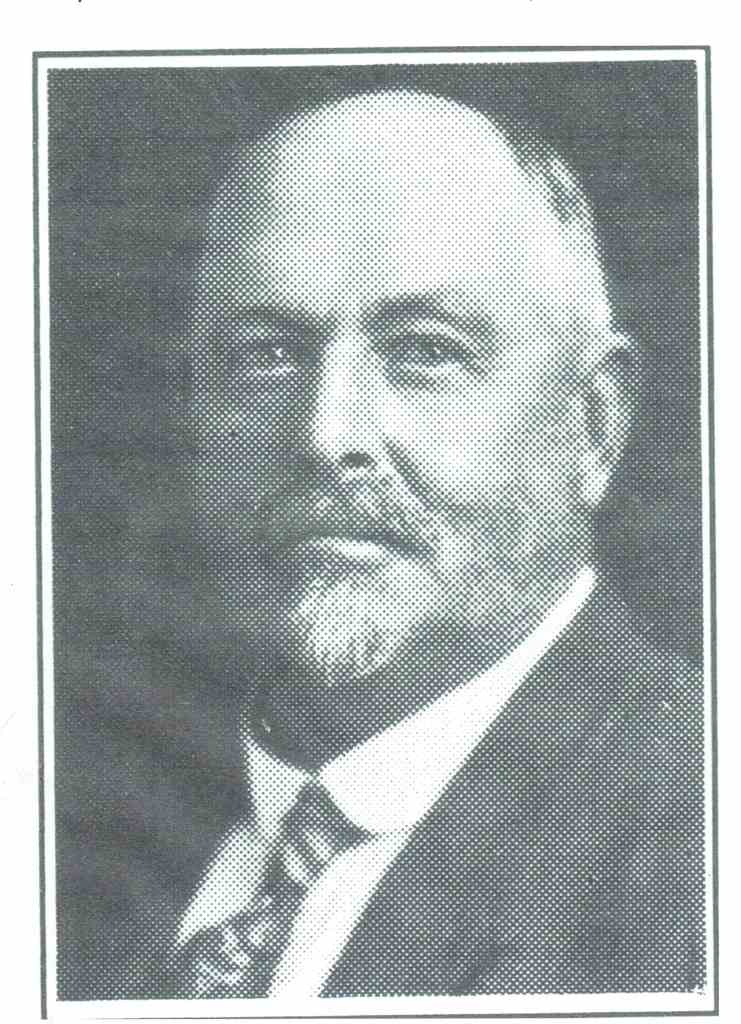
Frederick Richard Seddon (Dick) was born in Howick in 1869 and in this year the family shifted to somewhere around Hamilton East and more precisely in the area of Knighton Road named after the family home "Knighton" in England.
Dick Seddon occupied his approx. 2650 acre holding in 1902. His home, which is presently occupied by Rob & Jill McGuire & family was not built until 1910 so it is not clear whether he lived in a whare on the land or moved back and forth from his family home in Knighton Road. Dick Seddon was physically a very big man who had a very big problem farm because of the large amount of wet peat.
He was also a sports loving character who would think nothing of boarding a train at Frankton and going to Wellington for a provincial rugby match. He was a Waikato rugby rep. Another sport with which he was closely associated and at which he excelled was clay bird shooting. Over a number of years he won many clay bird competitions including several NZ championships.
Dick Seddon was also President of the Hamilton Club 1924-1928, and President Waikato Racing club 1932-1945, having been vice-president for many years. He was President of the Waikato A & P show 1923-1924 and patron for many years. He exhibited stock for many years and had not missed a show for 60 consecutive years. At his home, he had a croquet lawn, a pleasant garden and entertained, enjoyed and fostered local interests.

He had one son Charles who in 1933 married Miss Marjorie Bell who was teaching at the Puketaha School. After their marriage they stayed with Dick Seddon for 7 years and then purchased 1000 acres at 3 pounds per acre the northern side of Piako Road. This land, went almost from the end of Puketaha Road up to Mr W A Bridgeman's property, had previously been operated as a flax growing enterprise. It was at this farm where Charles died and after some years with a sharemilker and a manager (Mr Joe Morrison) Marjorie Seddon shifted to Auckland and is presently living in Remuera.
When Mr Dick Seddon purchased his farm he had to purchase so much of the wet lands with the drier area as on its own the wetter land couldn't be developed.
The south western part of the block was reasonably consolidated. The northern side was heavily timbered but fortunately with only one layer of logs and stumps but it took a considerable time to get reasonable pastures. The eastern end was very wet with the peat 35ft deep in places and consequently drainage and time were required for fairly gradual improvement.
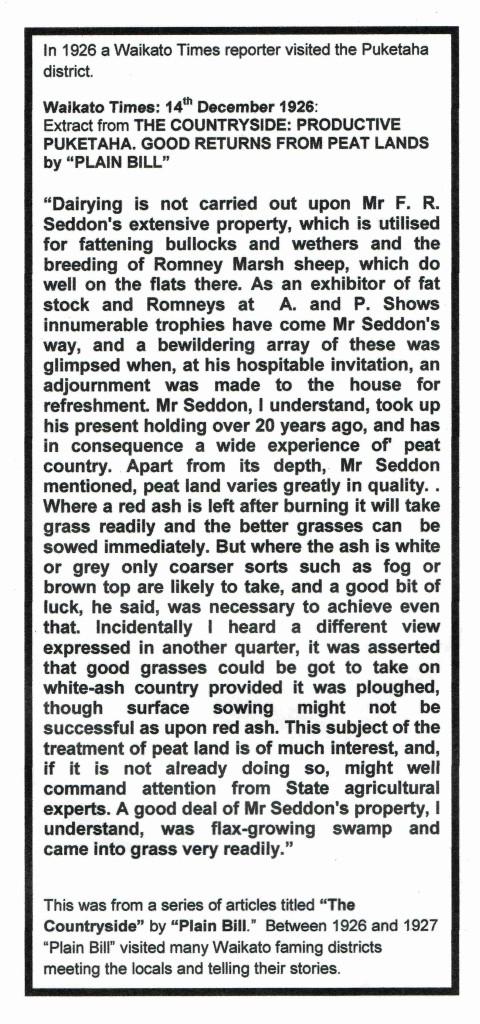 He built three houses, the homestead, another about 1 km to the east of his homestead, and one on the corner of Seddon Road which was occupied by the Letford family. Mr Percy Rickard, a lifetime resident in the district, remembers broadcasting by hand the one and three quarter cwt. of super phosphate bags of fertilizer over the farm for many years. Dick Seddon held and farmed the total area until approx. 1947 when he sold it to the New Zealand Government under the Land Acquisition Act for the rehabilitation of returned servicemen for 14 pounds per acre. It was taken over by the Lands and Survey Dept. who administered and developed it until finally settled.
He built three houses, the homestead, another about 1 km to the east of his homestead, and one on the corner of Seddon Road which was occupied by the Letford family. Mr Percy Rickard, a lifetime resident in the district, remembers broadcasting by hand the one and three quarter cwt. of super phosphate bags of fertilizer over the farm for many years. Dick Seddon held and farmed the total area until approx. 1947 when he sold it to the New Zealand Government under the Land Acquisition Act for the rehabilitation of returned servicemen for 14 pounds per acre. It was taken over by the Lands and Survey Dept. who administered and developed it until finally settled.
During the next couple of years a road was formed and fenced to go chains through the property in an easterly direction and houses were built on the surveyed allotments to accommodate, temporarily, the farm employers.
In 1952 there were three farms settled by Dave McGuire, Alan Mitchell, George Richards and Alan Parnell who arrived in 1953. Unfortunately the 1942 values were discontinued in 1951 so the Seddon Road farms were purchased at market values. At this stage the Govt. considered that the land was not as yet suitable for further settlement and as a consequence because of the development time scale, this was the end of rehabilitation settlement.
The block continued to be worked on and developed with extreme difficulty because of the very wet peat and when it was finally cultivated the fertilizer and grass seed had to be sown by plane as it was not possible to get mechanical equipment on the paddock after cultivation.
Sheep and cattle were first used but the use of sheep was discontinued as they couldn't accept the tough conditions. There were several cases of sheep being trampled underfoot in the drains after running before the cold wet and windy rainstorms.
Subsequently Seddon Road was completed to meet Waverley Road and the previous small allotments of 90-93 acres were discontinued and the remaining sections were something around 130 acres and this was a much more realistic area providing much better productive units. All this aided further development but it was a slow process as drainage played a restrictive impediment to soil cultivation and it wasn't until 1978 that the first (Mike & Joy Stokes) of nine young farmers took up their balloted farms. Fortunately they were top quality farmers and the eastern end of Seddon Road was transformed.
The situation presently is that two of the original rehab men are still on their farms— Dave McGuire and Alan Mitchell, Rob & Jill McGuire live in the Seddon homestead (Alan Parnell's farm), and Albert Voorend in George Richards place and these together with the other nine settlers make up the farm ownership. In addition Landcorp still own and operate a deer farm of 350 acres , a bull farm of 560 acres and two dairy units with sharemilkers on land totalling 320 acres.
The total block which in Mr Seddon's time had three houses with a population of probably 8 or 9 people is now home to nearly 80.
Dave McGuire
The text has been copied from the 1991 Puketaha School anniversary booklet
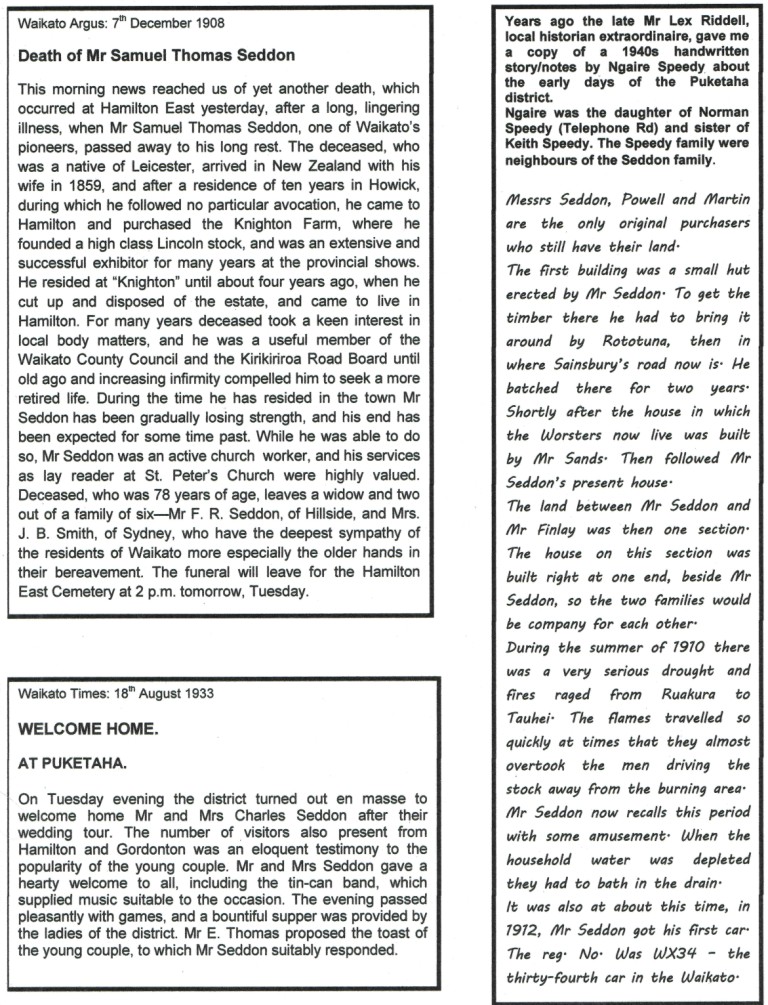

___________________________________________________________________________________________
Speedy Family
(Telephone Road)
David and Helen Speedy and their 9 children arrived in Wellington from Scotland in 1841, moved to Upper Hutt for some years and then further north again to Sanson. It was from here that Keith's father Norman was sent as an 18 year old (in 1904) to prospect for land in the Waikato. The Family moved to Puketaha where, on his parents' retirement to Hamilton, Norman Speedy purchased approx. 1493 acres of land from the N.Z.- Loan & Mercantile Agency on Telephone Road in 1914.

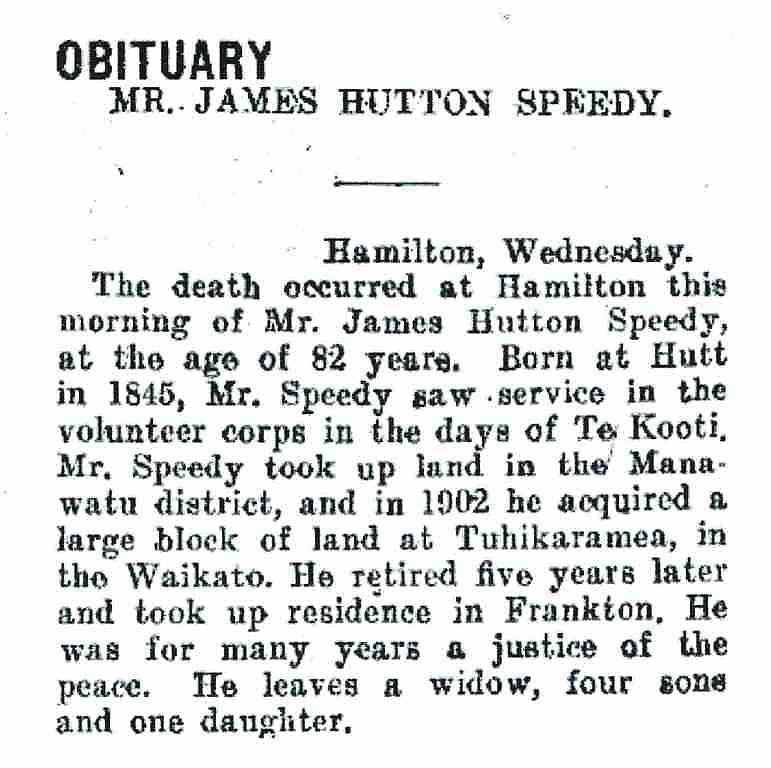
Taranaki Daily News: 22 April 1927
Keith Speedy writes:
"Up until the troops came up the river there were several Pas on the Hamilton river banks and from the one near the intersection of River Road and Oakleigh Ave., (where there are earthworks still preserved) they made occasional eeling expeditions to Lake Rototuna (Lake of Fish), their route taking them over Crosby Hill into what they called Puketaha, meaning "over the Hill". Later a land settlement company called it Hillside, an approximate translation. The Company's land reached from Whitikahu Road into Newstead, and for administrative purposes was divided into three areas — Woodlands to the north, New-stead south and Hillside in the middle. A Manager's house was erected on Whitikahu Road (the present historic "Woodlands") and a similar one which burned down about 1950, a km east of Newstead Cemetery. Very wet, Hillside was uninhabitable, mostly raupo and flax with ti-tree in the less wet places. The intention was that Woodlands and Newstead would eventually develop half each of Hillside but when later it was discovered that there was deep peat of unknown depth in Northern Newstead and beyond, it was left to Woodlands to look after Hillside. Prior to that decision, a phone line was erected in a straight line between the Woodlands and Newstead managers' houses after a dewatering drain had been dug along the route, starting from Woodlands, and known as the Telephone or the Cable drain. After a little
more deepening the spoil thrown out, together with some local drying out and consolidation, became a light horse vehicle's dry weather track called Telephone Road. By the turn of the century settlement of Woodlands-Gordonton and Newstead was well advanced but Hillside still belonged to the pukekos and wasn't opened for settlement until 1907."
Norman went there with great expectations and although in the course of time they were to some degree fulfilled, it was a long haul. Norman told his new bride "We'll have all this in grass within 10 years." Certainly a brave and determined ambition, but dealing with peat was to be recognised as a slow moving development and it was many years before the whole area came into production.
To quote Keith Speedy again — "When settlement began it was discovered there was already a Hillside in the South Island and so the district reverted to the original "Puketaha" but Hillside remained in limited use e.g. the Hillside Roads Board. Local roads boards preceded the formation of Counties. The Hillside Board concerned itself only with Puketaha Road as far as the present Telephone Road junction. Along the roadside they left 4 shallow pits and a big one outside Arch Taylor's house. These remained unfilled until around 1950 and were the bane of parents lives because they often made the school children late home — water to paddle in, interesting water vegetation, green slime and frogs were irresistible.
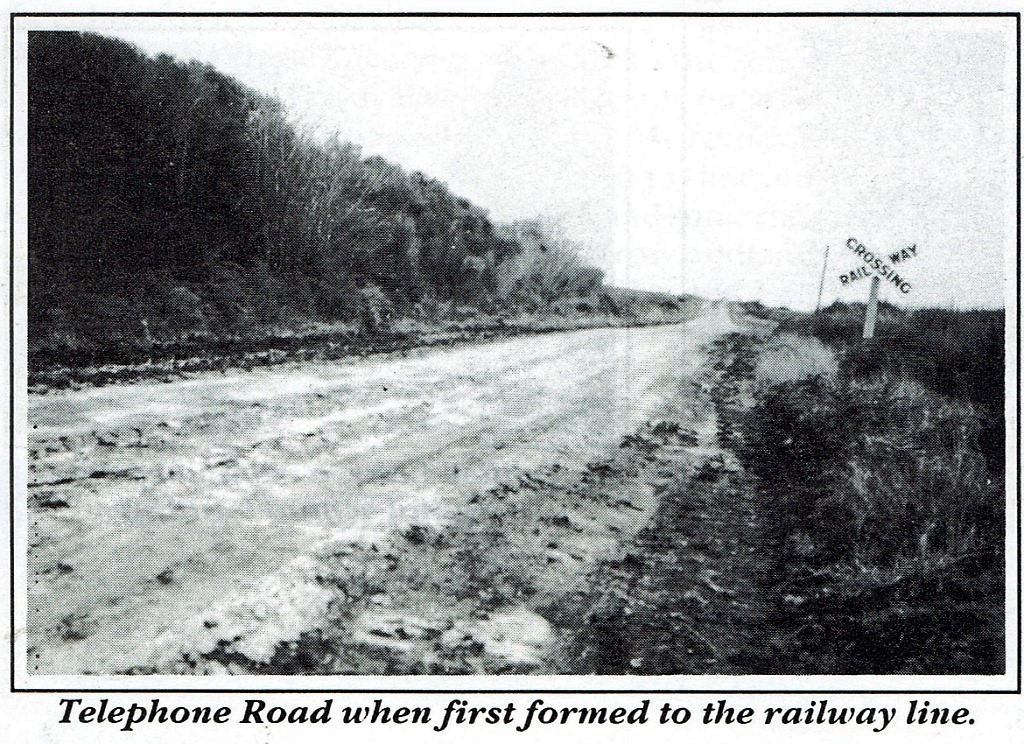
Until 1925 cars would get stuck on the Mikkelsen and Thompson clay rises, Carr Hill and Tramway Road, now in the city. It wasn't until near the end of the twenties that Sainsbury Road and Puketaha Road between Telephone and Taylor Roads rid themselves of the stigma, but only just, because passage over them during the winter remained dicey to the mid thirties. Taylor Road to the end of the thirties was a lightly sanded track which meandered between the fenced lines and up and down on very uneven red ash ground. Until 1930 Puketaha Road between Taylor and Piako Roads was unsurfaced peat and Telephone Road quite often was for horses only. Until the later twenties Dad sometimes had to use chains to drive over our short stretch of Telephone Road and the cream pick-up truck didn't go past our stand. In 1930 Telephone Road became an all weather road to half way to the railway but beyond that halfway point it was still the original land settlement company formation with fire holes and some ti-tree, passable on horseback.The original entry into Gordonton and Puketaha was by way of Crosby Road which followed the ancient Maori track. When later the alternative Tramway Road became available it went from the top of Carr Hill, along the ridge to the top of Crosby Road. Between Carr and Greenhill Roads there was unroadable swamp. I don't remember the ridge road in use but it was still there, goose filled, until near 1960. But as a child I remember the new stretch curving across the flat. Rough between Greenhill and Puketaha Roads, it dipped sharply to two one way bridges, and where the County Depot now is, the road was regularly moved to one side or the other because of several acres of sandpit on both sides of the road. Through the thirties Puketaha Road was shockingly corrugated, especially the west half; it was hard to hold a car on the road. With severe war-time petrol rationing the surface wasn't so bad the few times I was able to see it then, but in the fifties until it was sealed, it was worse than ever if that was possible and in dry weather the dust clouds were appalling."
Drainage, fencing, water reticulation and the inability to move cattle regularly over the same ground were severe impediments to quick improvements. Travel of any kind was difficult in those days. Keith Speedy notes — " The early settlers made their own "roads" by deepening roadside ditches, clearing raupo and flax, laying ti-tree fascines and encasing their horses' hooves in sacks. [Fascines were armfuls of scrubby ti-tree tied together in bundles and used for paving and draining. Possibly because of the preservative action of the peat water, fascines were remarkably long lasting. There is a fascine drain still in working order on Barry Ward's property]. When Dad arrived in 1914 he had to remake Telephone Road as far as his entrance and then to the house site, that house now occupied by Roger Dryland."

Now the trip to town is a matter of minutes only. Then, Hamilton was half a day away. Getting stock to the Frankton saleyards posed enormous difficulties. "When our milking shed was down the back Dad would leave halfway through milking with a dray of pigs, have a quick breakfast and then Jerry the draft horse had a long plod to the saleyards via Hamilton East bridge and the main street. There was a water trough at the Claudelands shops. To avoid the haul up the Hamilton East gully hill, they went down Te Aroha Street and Memorial Drive, and along Victoria Street to avoid the hill between Girls' High and Tech — no Anglesea Street cut through Garden Place — and horses were tired by then. Everyone carried chaff bags and halfway there would be a pause for a feed and a drink of a bucket of water from a drain. The married couple living down the back of our place, would have to do the night milking on their own. About 1926 the cream truck contractor Gilling, who earlier had been living where Charlie Bogun (now Mikkelsen) was, began carting pigs — a big relief for Dad and others. Driving stock was as difficult. Our wonderful cattle dog Joe knew the route and went ahead to stand barking in the middle of the "wrong way" road intersections. As mobs of cattle converged from all directions into town there was often confusion and mix-ups of stock and sometimes wild escapes. After the Fairfield Bridge opened in 1936 things were much easier for drives from our area. Trucking cattle didn't begin until 1950 and there was still some droving via Maeroa Road until the mid fifties." Farmers at the further end of Telephone Road realised the trip to town would be much shorter if there were a road alongside the rail to Ruakura Station. In the late forties Eddie Carlyle, who'd bought one of the Speedy lots and who like many in his situation worked two jobs for a couple of years (as a motor mechanic in Hamilton by day, and on his land during the evenings and weekends) started a track with slasher and shovel. Keith Speedy did further work on this track and the Council later clay-covered it and took it through to Eureka Station and named it Holland Road.
Drainage, of course, was the big problem. A drain was dug between the Speedy and Seddon properties and was of immense value but the water at the back of both farms was more difficult to dispose of and the main outlet from there was through the central drain down to the Komakarau stream, Mangawara stream and into the
Waikato river. Keith Speedy notes: "In 1930 Dad and one or two others in the Drainage League took Prime Minister George Forbes for a long walk, into the ti-tree and moss covered peat and ooze at the back of Seddons, motored him through barely passable Piako Road and thence via Tauhei Road to Whitikahu Road where they made a return drive down Tenfoot Road and then via Gordonton back to our place and up Telephone Road, to demonstrate that the area had no hope of being reclaimed by the existing drainage system. Lands and Survey maps carried showed that he had seen only a portion of a vast swamp areas."
In 1991 there is not one area of undeveloped peat in the north-eastern portion of the Central Waikato basin. Drainage in the area has improved in tandem with land development. Land around Puketaha is an average 27 metres above sea-level and with a distance of something like 50 kms to the sea it is a great credit to all those engaged in drainage right from the early days up to the present that the flood protection scheme is such that flooding is controlled. The Waikato Valley Authority has played a major role in controlling the Waikato River with stopbanking and ponding areas.
Initially beef cattle were farmed and perhaps with set stocking of the animals the peat surface was better able to withstand the tramping. At this time of the farm's operations the peat's need of trace elements had not been discovered and it was not until quite a few years later that copper sulphate, selenium and cobalt were introduced. These, together with the availability and application of super phosphate, potash and large quantities of lime allowed a rapid increase in production.
Keith Speedy writes: "When Dad came to Puketaha the railway lines were level with the land with track gangs always putting in more ballast. By 1930 Dad's draining had lowered his ground near the railway a metre, and a few years after the Central drain went in, the same had happened along Seddon's rail frontage.... When trains went by, the ground for some distance out shook like jelly." Fires were a nightmare for the Speedys. "In summer the dry surface peat easily caught alight, ignited mostly by locos, and readily burnt to leave a timber waste, which had to be got rid of or else was left to rot . . . It's now hard to imagine all those stumps in the paddocks fronting Puketaha Road." The fires were quite difficult to put out, sometimes burning for weeks, and the replacement of fences and drains was very expensive. However, as time went on dairying was established and this over the years grew to a sizable operation. It was difficult to maintain farm races and gate ways with suitable filling that allowed cows to be shifted over the same ground twice a day. There was a scarcity in the Waikato basin of any suitable filling that was sufficiently stable to last a year. The rotten rock that was in surrounding hills was out of the question because of cost and transport difficulties. The trucks as they came into the scene were too small and the roads were too bad. Sand under some of the peatlands was quite good but again digging it out by hand in the quantities that was required was time consuming and a major and laborious operation.
The quick solution to wet and boggy farm races and gate ways was to cut fences and use a crossing over the fresh, more solid turf until conditions improved or another fence had to be cut. The inability to move stock around the farm easily was quite a limiting factor but like all problems was gradually overcome and with the advent of tractors the problem eased significantly.
In earlier days the Speedy cowshed was about half way down the farm and while this may have had a lot of advantages early on it was a great relief when the shed was brought up to its present position.
About 1936 a rotary hoe was purchased and while it must have been a very great advantage over any other type of cultivator, it was very easy to get stuck in the many soft spots.
In the early 1930s butterfat was fetching something between 6d and 8d per lb for butter. In the late 1930s Mr Nash went to London and negotiated a bulk butter and cheese purchase agreement and as a result was able to offer the dairy farmer a guaranteed price for these two commodities. The price per pound of butterfat for producing butter was ls 2d.
hortly after the introduction of the guaranteed price the war period intervened. On his return Keith and his father carried on until in 1951 when Mr & Mrs Speedy Snr left to live in Hamilton where they lived until the death of Mrs Speedy in 1959. After that Norman returned to the farm and stayed with Keith until the sale of the property to Bob Falconer in 1966. Both Keith and his father returned to Hamilton to live where Norman died in 1971 aged 85.
It hasn't been ascertained whether in 1914 Norman Speedy purchased the total block in his title, but at some stage in the early part his father, his sister Clarice and brother Alex (who was later to spend the rest of his working years with the Public Trust) had title to possibly 300 acres. Some years later Bill Sexton, a long time resident in the district, purchased part of that 300 acres which subsequently was purchased by Tom Hicktnott and that together with 100 acres purchased from Keith Kelly a previous owner of Speedy land, gave Tom Hickrnott 300 acres which he currently owns. Later again, about 1960, another allotment of 113 acres was sold to Harold Cleland adding to his previous purchase of 200 acres in the fifties, making the 313 acres which he now owns. This was the position when the balance of the holding of 880 acres was sold to Bob Falconer in 1966. In 1979 Bob Falconer sold 300 acres to the Dryland family which is now represented by two 150 acre titles in the name of Paul and Roger Dryland. In 1980 Bob Falconer sold the remaining 580 acres to Ray Clausen, the present owner.
When the very tidy and prosperous dairy farms of today, carved out of raw peat, are reviewed in retrospect, it is hard to imagine the time-consuming and backbreaking effort that was employed to bring them up to a standard that makes the Waikato the show place that it is today. Keith Speedy notes: "Nearly all the men eventually developed bad backs. There was an enormous amount of hard physical and back bending work- lifting big sacks of fertiliser which really required two men to do it, pitching hay into a dray and from there up to the stack, never ending draining, milking shed designs requiring hundreds of stoops for milking, carrying two four gallon tins of pig milk — drums of it — and so on and so on, no end to it. Relief
didn't come until the fifties with the introduction of contract hay baling, fertiliser spreading, new milking shed designs, milk tanker pick-up etc. When about 1954 we went onto tanker, the first in the district, it was like going on holiday, but unfortunately that feeling didn't last long! It was as hard for the women folk, as many helped on the farm, there were no washing machines, for a long time there were coal ranges, no fridge; they made their own and the children's clothes, knitted endlessly, all had big orchards and vege gardens and in summer there were those mammoth sessions of bottling and jam making and the weekly baking days! No-one ever bought anything of the kind. Almost all of the pioneer women finished up as heart cases, Mum included, and some died in their Puketaha homes from that e.g. Mesdames Seddon, Thomas, Cleary while still "in the prime of life", while others like Mum, Mrs Thompson and Mrs Sainsbury developed chronic heart weakness."
Keith Speedy
The text has been copied from the 1991 Puketaha School anniversary booklet
___________________________________________________________________________________________________________________
Taylor Family
Puketaha & Gordonton
The brothers, James (1856-1938) and Norman Taylor (1876-1958) both acquired properties in the Hillside-Ormond subdivision in about 1902/3
Brief Family Background Story
Their father William Innes Taylor (1821-1890) arrived in Auckland late 1843 aged 22. He was ambitious to go farming having done his apprenticeship in Scotland.
William Innes Taylor was born in India but educated in Scotland. He was the oldest son of William Taylor and Barbara Innes.
He quickly established his Glen Innes farm at West Tamaki and by the mid 1850s it totalled about 720 acres.
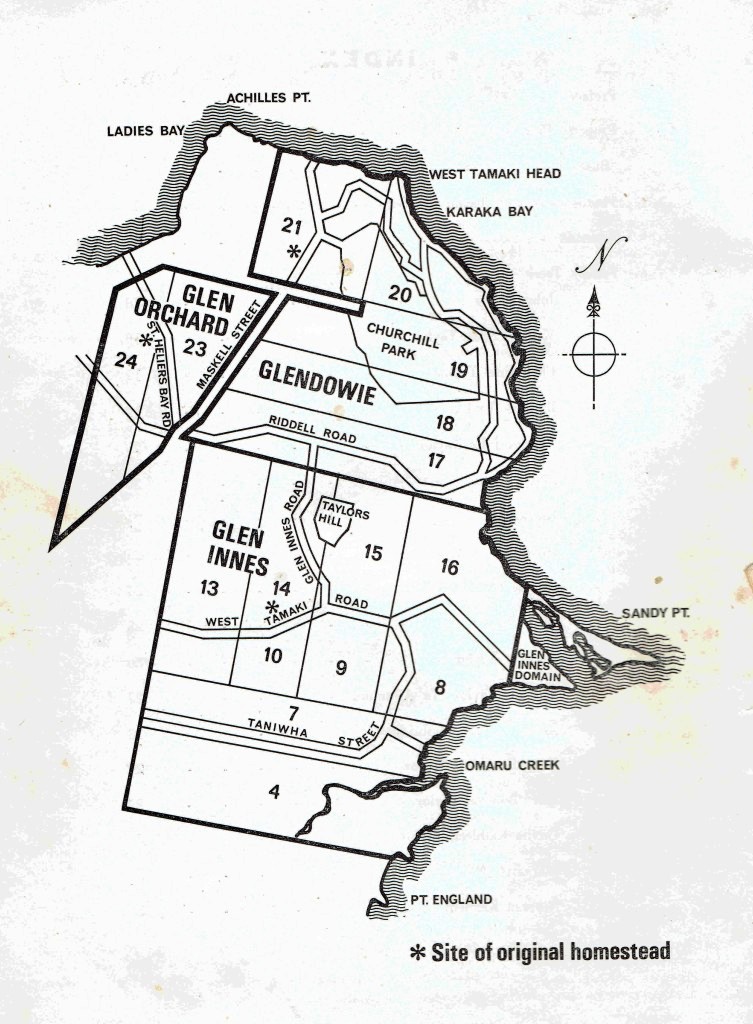 Within a decade of his arrival to NZ his father, five brothers and two sisters joined him in NZ. Richard Taylor established Glendowie farm next to William’s Glen Innes property. William’s father, now a retired General of the East India Company took up residence at Glen Orchard which was also was next to Glen Innes. On the other side of Auckland Allan Kerr Taylor, another brother, established a property at Mount Albert called Alberton.
Within a decade of his arrival to NZ his father, five brothers and two sisters joined him in NZ. Richard Taylor established Glendowie farm next to William’s Glen Innes property. William’s father, now a retired General of the East India Company took up residence at Glen Orchard which was also was next to Glen Innes. On the other side of Auckland Allan Kerr Taylor, another brother, established a property at Mount Albert called Alberton.
William Innes Taylor married Anne Adamson in 1849. They would have twelve children. Eleven reached adulthood.
At the conclusion of the Waikato Land Wars in the 1860s William Innes Taylor invested in the Waikato. In 1868 he bought land at Te Awamutu. The property was called Greenhill. The Greenhill homestead, built in 1880, stood high on the hill as you entered Te Awamutu from the north. It had a commanding view over Te Awamutu and the surrounding countryside. William’s eldest son also called William ran Greenhill for his father which by 1880 comprised of 2250 acres. William inherited the property after his father’s death in 1890.
In 1875 William Innes bought a second property at Cambridge of about 750 acres from Mr John Kirkwood. It was situated between Hautapu and the Cambridge village (roughly in the vicinity of where the Cambridge Raceway is today) He named this property Bardowie in recognition of the place in Scotland where he learnt the rudiments of farming. His second son James, at the tender age of twenty, was sent to the Waikato to run it. The Bardowie homestead was also built in 1880. James was quoted as saying about his trip down to Cambridge “We could not get our horses through the Te Kauwhata hills fast enough and would not have given £100 for the whole of Matangi”
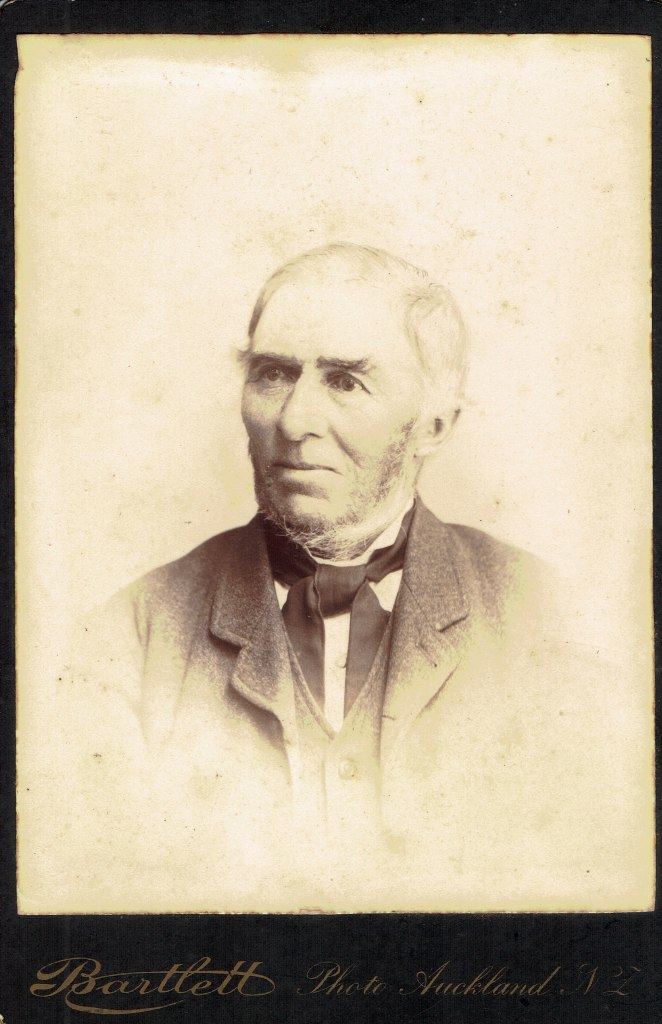
William Innes Taylor died suddenly in 1890 as a result of pneumonia. As the two oldest sons were entrenched in the Waikato the Glen Innes estate was leased and then slowly sold off as Auckland started to grow outwards. In the 1940s the then government bought the remainder of the estate under the public works act for state housing and schools. The Glen Innes homestead is now the site of the Glen Taylor School – ironically it is now considered to be a part of the Glendowie suburb. A giant Moreton Bay Fig tree, planted by William Innes Taylor 170 years ago still stands at the entrance to the school.
The Glen Orchard homestead at 91 St Heliers Bay Road is privately owned. The Glendowie homestead is believed to have been relocated to the Port Waikato/Franklin area sometime in the 1960s. Alberton is in the care of Heritage NZ (Historic Places Trust).
James Taylor (1856-1938)
(Gordonton, Sainsbury & Puketaha Roads)
“Ormond”
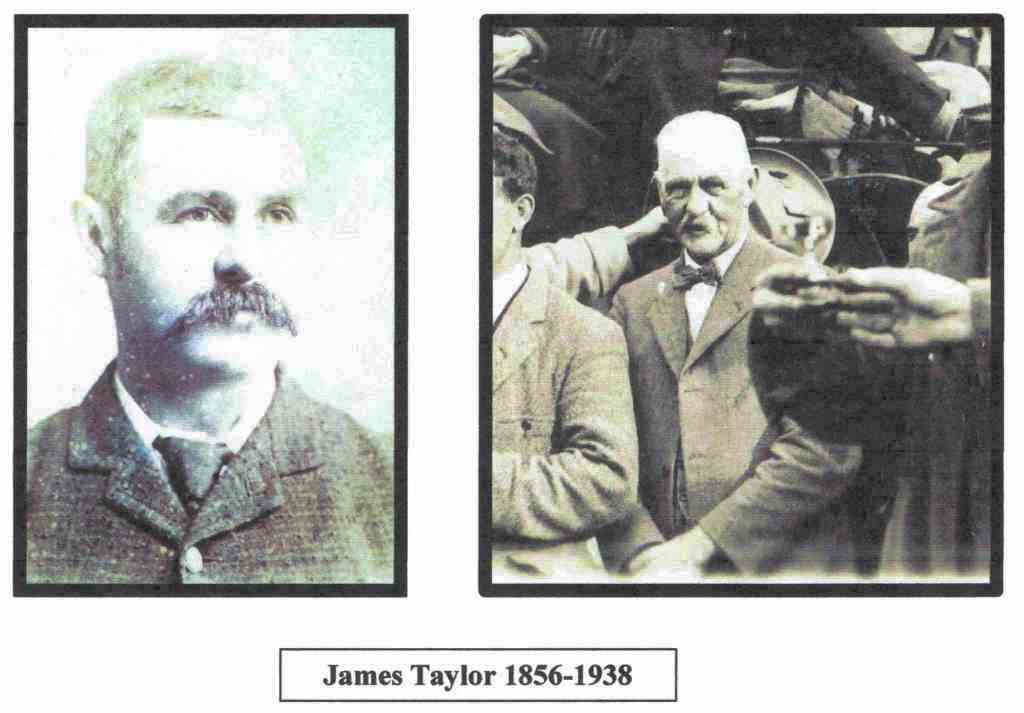 James Taylor never lived in the Hillside/Puketaha district. Undeveloped Waikato land was cheap and plentiful and James, like his father, saw many opportunities. So it came as no surprise that when the giant Woodlands Estate was being split up James would be interested. In about 1902/3 he bought 2000 acres at Hukanui (Gordonton) and approximately 1300 acres of the Hillside-Ormond subdivision. He quickly on-sold the 2000 acres at Piako Rd to the Chapman family. The Hillside-Ormond property bordered Puketaha, Sainsbury and Gordonton roads. In 1919 he sold 597 acres to Harold & Vida Cleland and a further 715 acres to Dan Barry. A year later Dan Barry, who by his own admission admitted he was financially embarrassed, sold 286 acres back to James Taylor.
James Taylor never lived in the Hillside/Puketaha district. Undeveloped Waikato land was cheap and plentiful and James, like his father, saw many opportunities. So it came as no surprise that when the giant Woodlands Estate was being split up James would be interested. In about 1902/3 he bought 2000 acres at Hukanui (Gordonton) and approximately 1300 acres of the Hillside-Ormond subdivision. He quickly on-sold the 2000 acres at Piako Rd to the Chapman family. The Hillside-Ormond property bordered Puketaha, Sainsbury and Gordonton roads. In 1919 he sold 597 acres to Harold & Vida Cleland and a further 715 acres to Dan Barry. A year later Dan Barry, who by his own admission admitted he was financially embarrassed, sold 286 acres back to James Taylor.
This part of the original block was opposite Dick Seddon’s block on Puketaha Road. James Taylor built a house plus a milking shed for his manager. The property was always referred to as “Ormond” After his death in 1938 it remained a dairy unit employing sharemilkers to run it. The property was sold to the Morrow family in 1975.
“Bardowie”
 James Taylor had established himself at Bardowie on the outskirts of Cambridge.
James Taylor had established himself at Bardowie on the outskirts of Cambridge.
He came to Cambridge in 1876, aged only twenty, to manage the Bardowie Estate for his father. It was a wilderness. His father had stocked the place with some cattle and James had found them grazing around the swamp edges. There were no fences to contain the stock and they roamed at will into the precincts of the town.
The swamp was quickly drained. Fortunately there was good fall through Tamahere to the Waikato River which enabled James, with good drainage, to dry out the property sufficiently to surface-sow English type grasses. Later ploughing and cropping was possible which quickly developed “Bardowie” into a productive farm.

Norman Kenneth Taylor (1879-1958)
(Taylor, Puketaha & Reid Roads)
“Bushy Park”
It was undoubtedly the influence of James Taylor that brought his younger brother, Norman Taylor, to the Puketaha/Gordonton district.
Norman was only eleven when his father died so his older brothers, William and James, played a pivotal role in his upbringing and future. Norman was educated at St John’s College (now King’s College) and worked for the Bank of New Zealand for a couple years before deciding to go farming in the Waikato. He worked on the James Taylor’s Bardowie farm at Cambridge and on the property at Puketaha (Hillside).
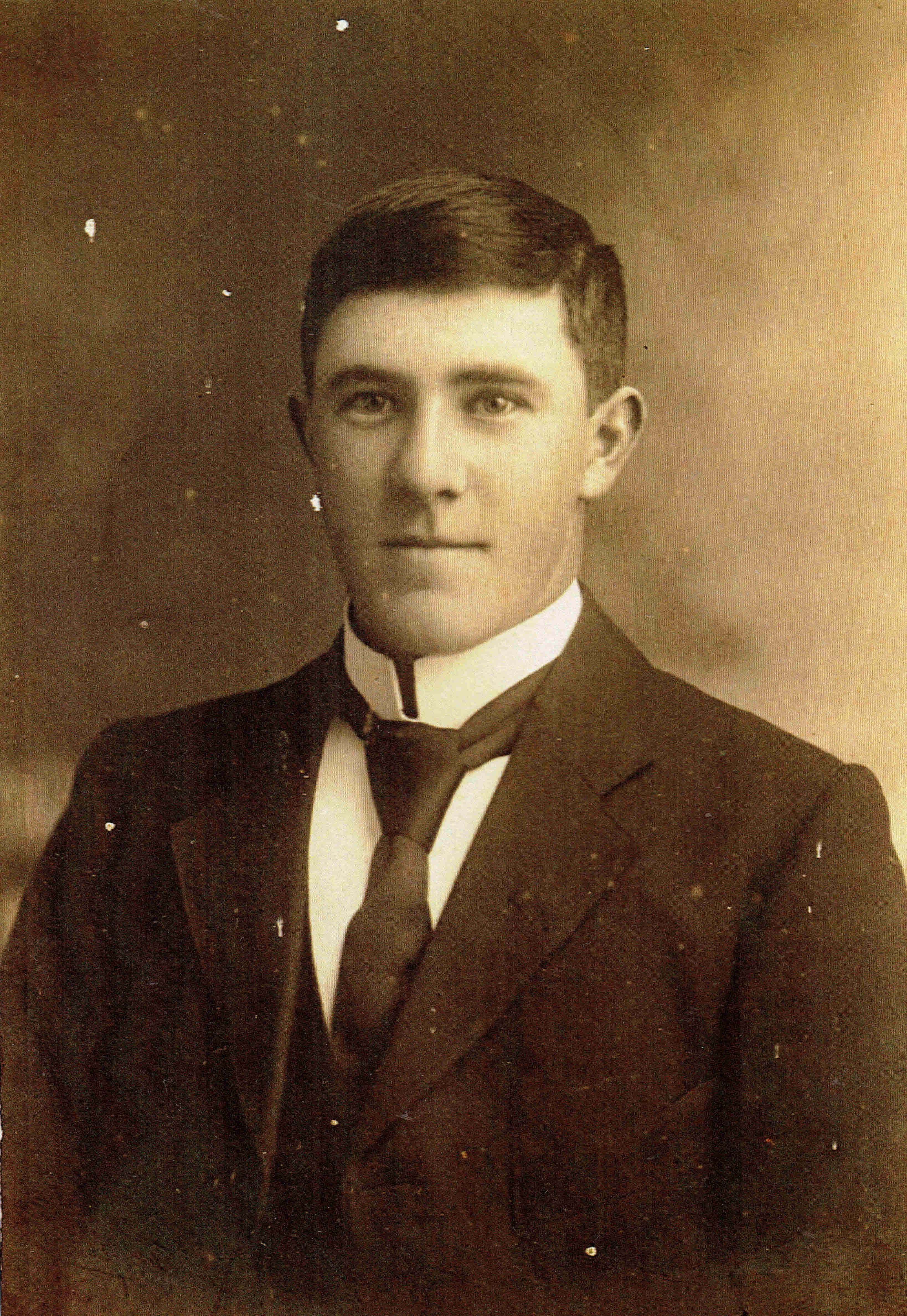
At the age of 25 Norman was encouraged (by James) to purchase 2712 acres of the Hillside subdivision of which 500 acres grew grass and the rest was swamp. The property took up the name “Bushy Park”
Norman married Kate McNicol eldest daughter of the late Mr John McNicol and Eliza McNicol in August 1907. They had seven children.
In the 1960s Colin Gordon wrote about Norman Taylor’s property at Gordonton. Colin, related to the family by marriage, was the Taylor’s family historian and did incredible work piecing together the Taylor story before it was lost.
This is an extract from Colin Gordon’s booklet : “The Taylors of Tamaki”
Norman & Kate Taylor’s Bushy Park
by Colin Gordon, 1966
ALTHOUGH my original purpose was to tell the story of Glen Innes, Glendowie and Glen Orchard, the original homesteads of the Taylor Clan in the Auckland district, so far as I could collect information about them at this late date, I am encouraged to go further and record the Taylor connection with other land settlements and ventures so that the rising generation may know something of conditions endured by their forebears in carving out an inheritance in undeveloped country. Among these ventures the transformation of a large area of swampy peat land at Gordonton, 9 miles from Hamilton, by the late Mr Norman Taylor, the youngest son of William Innes Taylor into a highly developed sheep and dairy farm is an example of man's determination and grit and a self sacrificing devotion to the land for over half a century. Mrs Norman Taylor (Aunt Katie) and Ralph, his eldest son, have supplied the facts from which I have put together this account of Bushy Park.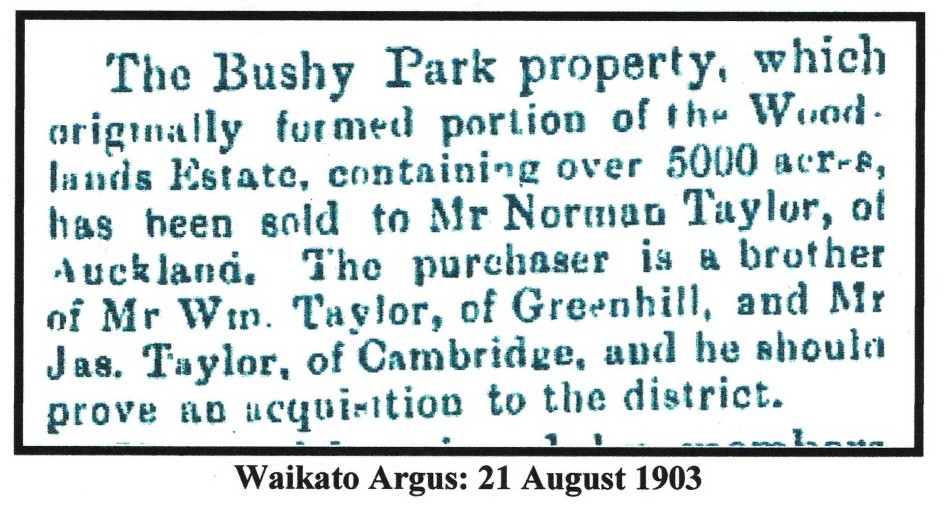
About 1904 or 1905 Mr James Taylor of Bardowie heard that the Woodlands Estate was to be cut up into varying sized farms but that the purchaser had to take the whole of a block or none at all. Norman Taylor, at the time only 25 years of age was working for James at Bardowie and at Ormond the property next door to Bushy, was advised and even persuaded by James to purchase one of these blocks of undeveloped country. The area was 2500 acres of which 500 acres grew grass and carried stock and the balance was a vast peat swamp. Later 1000 acres were sold at 30 shillings - per acre and this portion changed hands several times and in the early 1920's while still almost in its original state was sold for £20 per acre.
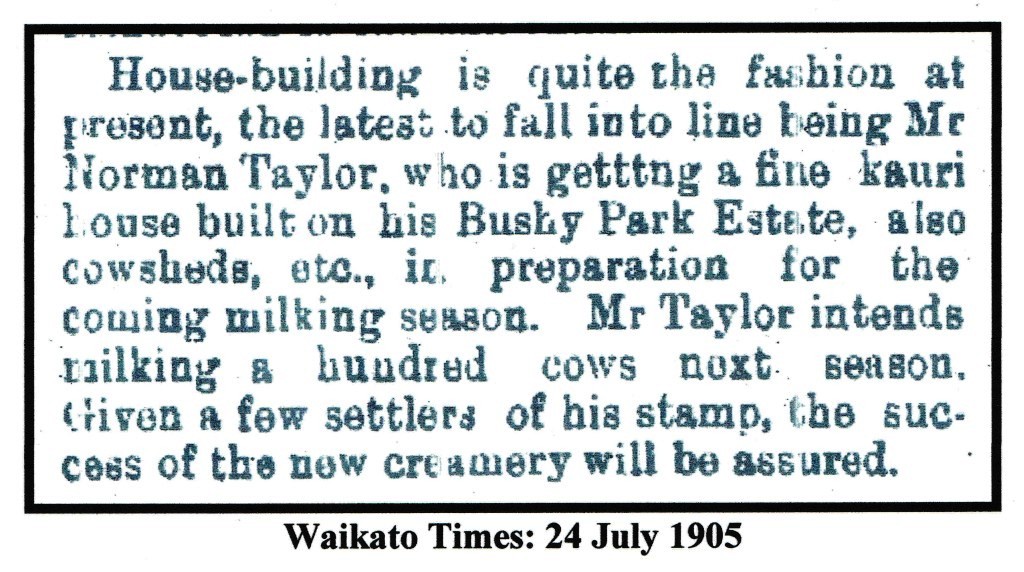 Norman Taylor boarded with the manager of Ormond for about two years and then built a house on the only clear paddock where it remains to this day tho' not in its original condition. His first housekeeper was Mr and Mrs Cann and for that reason he started off with one large bedroom, which in later years was divided into two smaller rooms. The Cann child was the first child born at Bushy. In 1907 Norman married Kate McNicol and the Cann's left and there were three single men in the kitchen who were housed in the shanty, named the "Angels Rest." As the family increased part of the verandah was taken in, another bedroom, office and drawing room built. Maids were easily got in those days so help was available for the young mother with a rising family. There was no road then and for many years after, and a tin bath and oil lamps were standard equipment. No store or butcher were at Gordonton so home killed mutton was their daily fare and groceries were delivered from Ngaruawahia by wagon once a week. No church existed and services were held in the hall, built by Woodlands employees, Anglican and Presbyterian alternatively and Aunt Katie played the harmonium for both services as there was no one else. Travel everywhere was by gig and a visit to Hamilton then nothing more than a village was considered a great treat. For several years there were men in the kitchen until finance allowed of a cottage being built for a married man and later as cleared land became available a milker's cottage and cow shed were erected.
Norman Taylor boarded with the manager of Ormond for about two years and then built a house on the only clear paddock where it remains to this day tho' not in its original condition. His first housekeeper was Mr and Mrs Cann and for that reason he started off with one large bedroom, which in later years was divided into two smaller rooms. The Cann child was the first child born at Bushy. In 1907 Norman married Kate McNicol and the Cann's left and there were three single men in the kitchen who were housed in the shanty, named the "Angels Rest." As the family increased part of the verandah was taken in, another bedroom, office and drawing room built. Maids were easily got in those days so help was available for the young mother with a rising family. There was no road then and for many years after, and a tin bath and oil lamps were standard equipment. No store or butcher were at Gordonton so home killed mutton was their daily fare and groceries were delivered from Ngaruawahia by wagon once a week. No church existed and services were held in the hall, built by Woodlands employees, Anglican and Presbyterian alternatively and Aunt Katie played the harmonium for both services as there was no one else. Travel everywhere was by gig and a visit to Hamilton then nothing more than a village was considered a great treat. For several years there were men in the kitchen until finance allowed of a cottage being built for a married man and later as cleared land became available a milker's cottage and cow shed were erected.
The first consideration in attempting to turn this dreary waste of swamp into pasture was drainage. Norman Taylor was a member of the first Hillside Drainage Board whose job was the opening up of the big main drains into the Komakorau .Stream which joins the Mangawara and enters the Waikato at Taupiri. Miles of smaller subsidiary drains had to be dug by hand — in all some 14 miles of them and up to the early '30's cleaned each year. A first-class man with the shovel did 10 chains per day at 2/- per chain. Fencing was another essential to control stock movements and keep animals from falling into the bigger drains — much of the material for these fences had to be carried in on men's backs as horses could not negotiate the swamps. Years of stumping faced the new owner using horses, crowbars, axes and explosives. Each 40-acre paddock would have two large heaps of logs and roots which were burned when dry enough. The handling of peat land was largely a matter of trial and error and knowledge of trace elements such as copper, etc., had not yet been discovered. When the peat had dried out sufficiently to be workable, paddocks would be worked up and sown in good grass which at first grew luxuriantly but in four years would revert to brown top and sorrel. It thus became apparent that the water level had receded too far and each year the peat on one or two paddocks was burned off, a task involving hard work and constant anxiety to control the burning peat fires from spreading to destroy the fenced drains and hedges. This burning off tended to make paddocks hollow in the centre and in the 1930's miles of tile drains had to be laid.
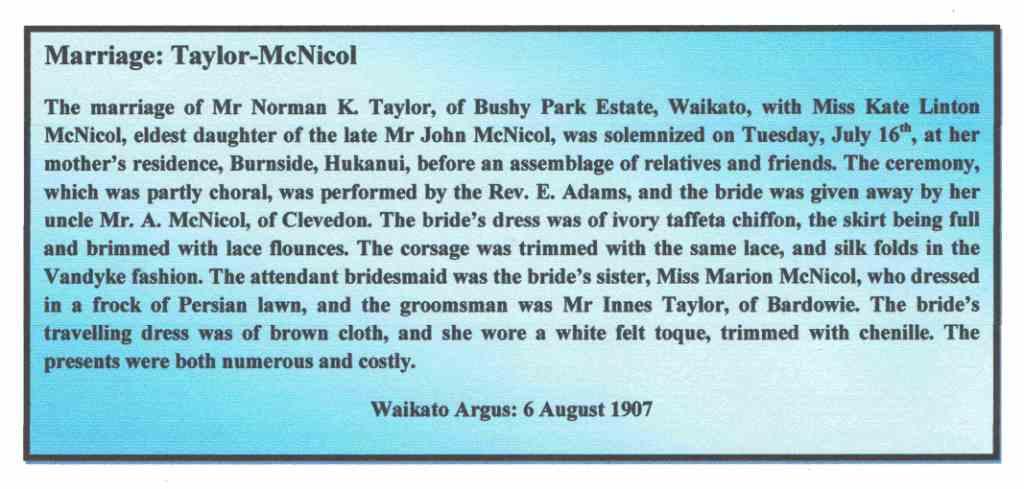
By 1935 the property would have been carrying 240 cows and replacements, 2000 ewes, and 500/600 head of cattle all of which were fattened. Up to 150 acres of hay were cut and stacked each year as well as crops of oats and swedes; the oats were grown to feed the teams of horses. Up to and during the depression there were two milking families, two permanent married men and four single men in full-time employment with an increase in staff at busy times drawn from the Maori settlement. The horse teams, summer and winter, worked long hours, 6 days a week the routine fob lowed being as follows :—The horses would be brought in from their paddock 1-mile distant from the homestead, stabled, fed and groomed by 7.0 a.m. Breakfast for the men followed and by 7.30 they had collected their lunch and be out in the yard to yoke their teams, collect the nosebags and be on the job by 8.0 a.m. or thereabouts. Water and feed their team at lunch time, home by 5.30 p.m. water, feed and leave in the stable to feed and cool down and after their own dinner the men had to rug their horses and put them back in the grazing paddock. It was hard unremitting toil for man and beast and it was their efforts which opened up the rich Waikato lands and brought them to the present state of productiveness.
After the depression years tractors took over and replaced man and horsepower. By this time too the sons had replaced the outside labour but the war years were not easy. Three men whose average age was 60 and one boy in his teens kept things running much as before. The family have been well served as regards their labour force. Three generations of the Smith family milked one herd for nearly 40 years and W. McLeod milked the other for nearly as long. P. Edwards, a workman of the old school and as good as they come served over 20 years, only retiring on account of ill health. B. Vercoe, at present milking for the estate, has been there at least 15 years.
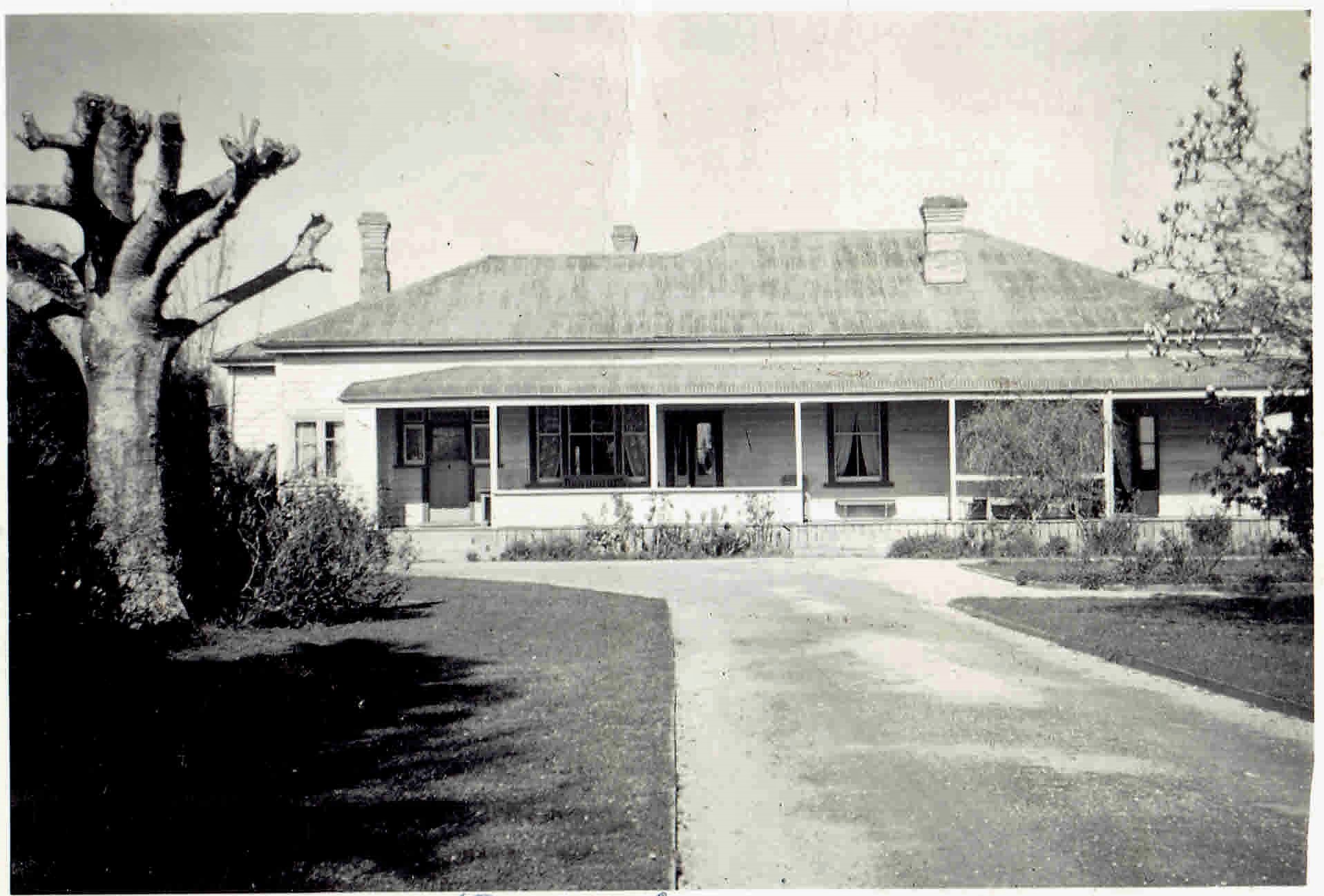
There is one whom all the Norman Taylor family will remember with pride and affection. Maggie McManus, whose service and devotion to the family over the years was so outstanding
I hope that this all too brief account of life and conditions in the Waikato in the early years of this century and the struggle of one man and his family to establish themselves in their chosen way of life will be of some interest. I have little doubt that a similar story could be written of the other members of the Taylor clan who established themselves at Bardowie (Cambridge), Greenhill (Te Awamutu), Lochiel (Ohaupo) if only one of their descendants would put in the necessary effort to get the facts and in my humble opinion the story is well worth telling and should be done now.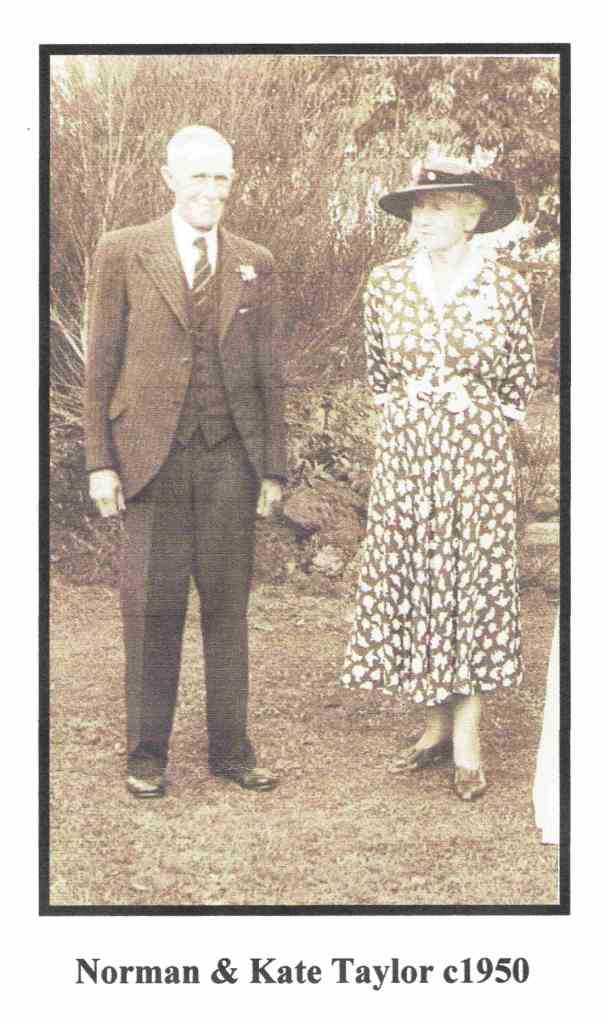
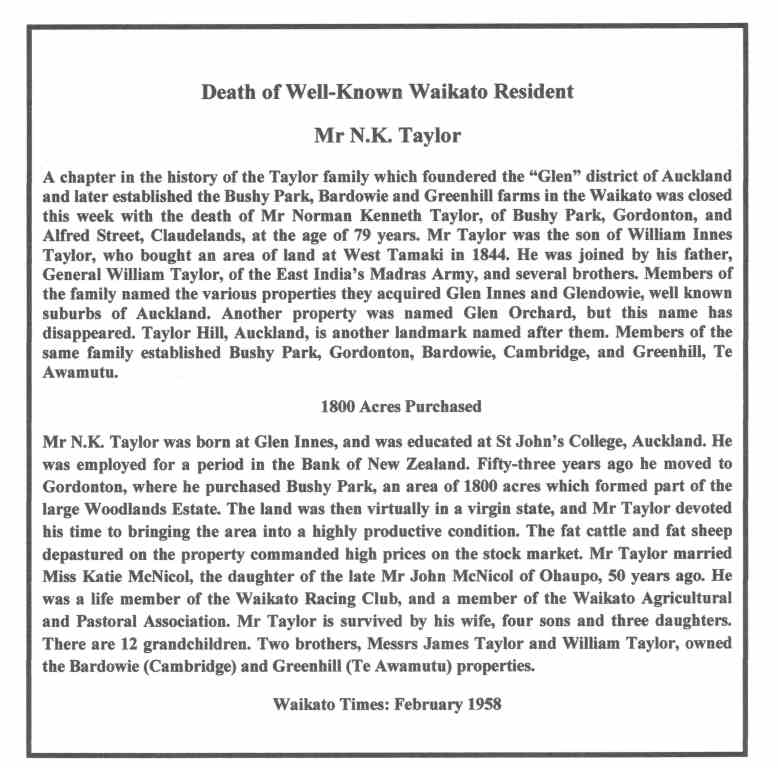
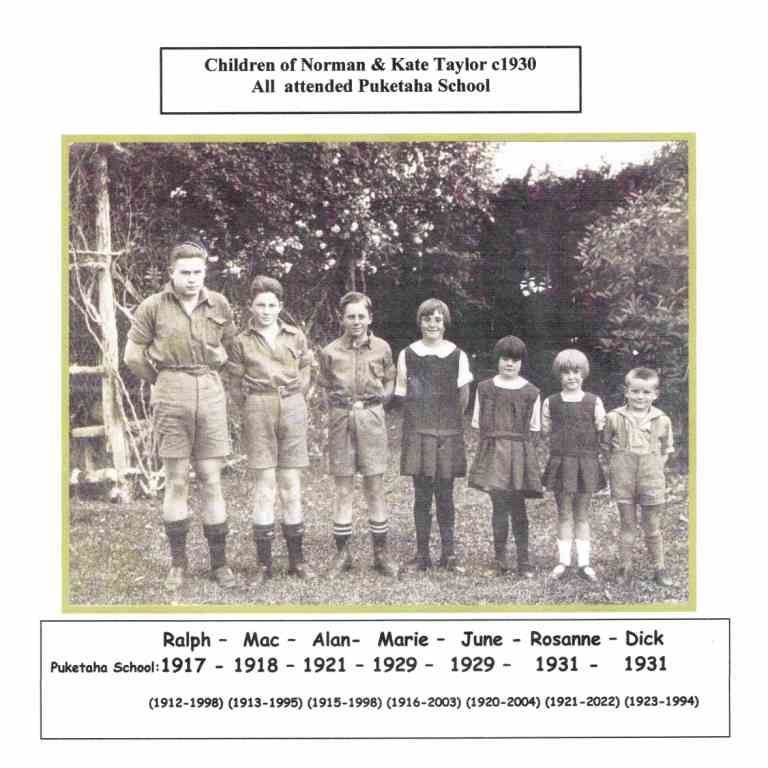
_________________________________MT 2022
Thomas Family
(Puketaha Road)
In 1907, Edwin (1871-1949) and Beatrice (1871-1937) Thomas, who were both children of Wairarapa settlers, with their children Ivy and Clarence left their grocery business in Wellington to farm in Waikato, settling in Puketaha.
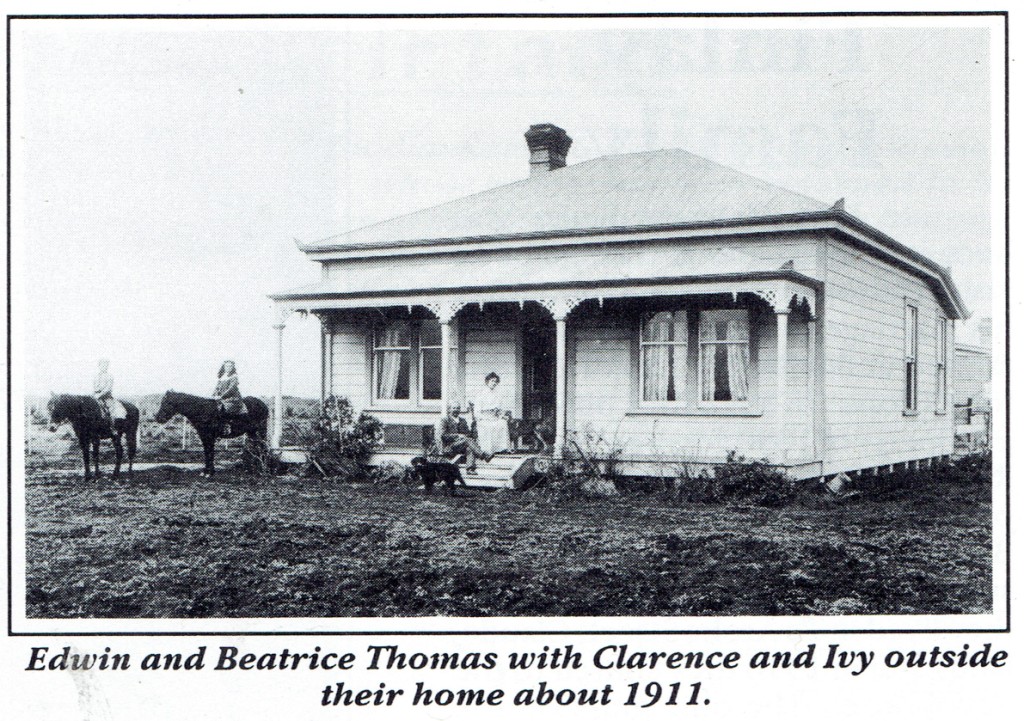
They purchased the property in 1910. While their home was being built, they lived in a house near the Kirikiriroa (Claudelands) Railway Station. Their second son Eric was born while they were living in Puketaha.
As there was no school at Puketaha, Ivy and Clarence rode their horses to Hukanui (Gordonton) school — along a road that was like others in the district — dusty in summer and muddy in winter. Later Clarence attended Hamilton High School, and Ivy and Eric attended Hamilton Technical High School. By that time they had progressed from horseback to wheels behind a horse!
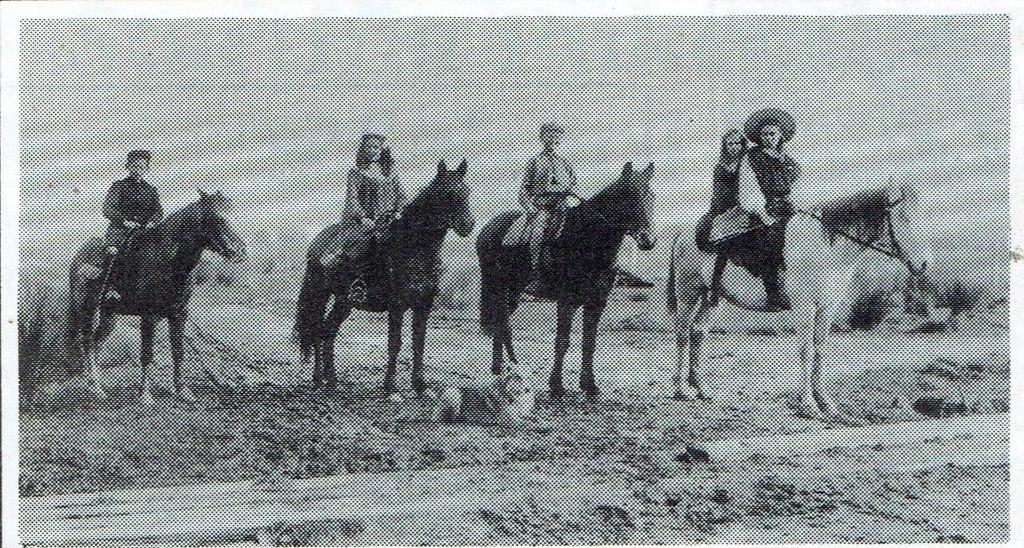
L-R: Charlie Seddon, Ivy Thomas, Clarence Thomas,
Edith Harper, Lily Harper. (and faithful dog!)
Corner of Bush (Sainsbury) and Puketaha Roads
After the Thomas home had been built, a lot of extra work was entailed in making its setting attractive. A large section was fenced off and prickly juniper hedges were planted for shelter with some large trees for shade. Mrs Thomas always had a colourful garden and a beautiful croquet lawn which required great care. It was rolled with a big concrete roller which required much strength to keep moving. No doubt it was a family united effort. Many pleasant croquet afternoons were held there with refreshments served under the shade trees on the corner of the lawn.
It must have been a pleasure to enjoy this after all the toil. So much time and energy had to be used to turn the land into a farm and garden. Much needed drains were dug — no mechanical diggers then! — fences erected and shelter belts of pine and macrocarpa trees planted. Later as the pasture improved there was haymaking, when the neighbouring farmers would help each other and the ladies would take hot dinners to the fields for the harvesters.
Every year there were peat fires that burnt along under the surface leaving a crust a few inches thick that was easy for unwary animals or humans to sink through. Such a distinctive smell that smoke had!
A large orchard was planted too, with many varieties of plums, peaches, pears and apples. The latter were stored in their own shed, on wire netting racks. Some kept well, right into winter. That room provided another very distinctive smell. Later, one of the first Chinese gooseberry vines added its fruit to the harvest. A smoke house for bacon and ham produced tasty products, often award winners at the Waikato Winter Show. The meat was from pigs bred on the farm, winners after being shampooed and groomed, at the AMP Show.
Along with a milking shed, other farm buildings were built. They included a large implement shed for plough discs, harrows, drill etc, stables and a complete forge.
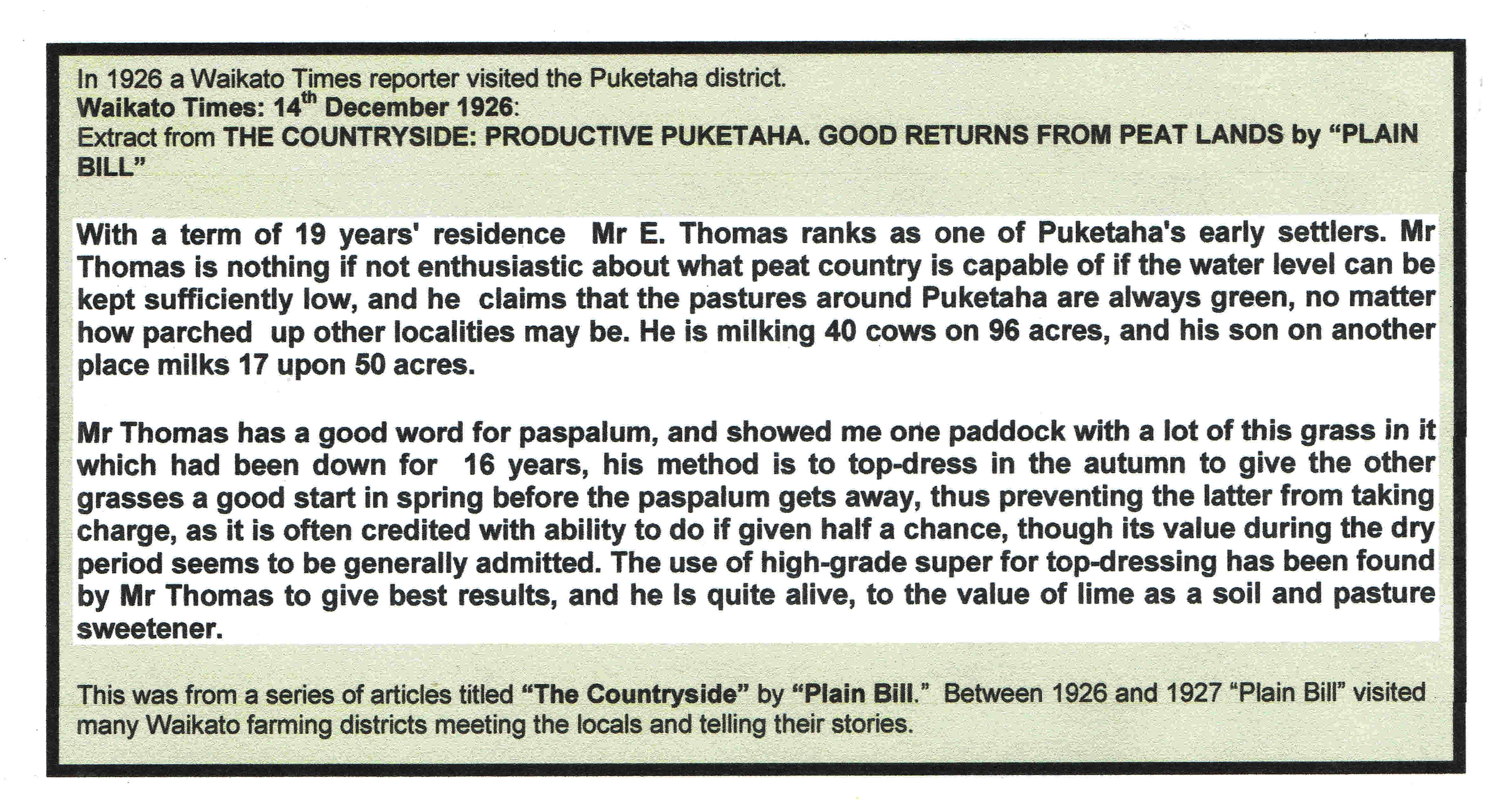
With no refrigeration to keep food fresh, many simple means were used. A mason jar or other stone jar in a box of wet sand would keep butter hard, even in the heat of summer. The Thomas family had a room under the tankstand, which was always cool, handy for fruit and vegetables, milk and cream. It must have been exciting when poles for electric power were installed in 1920, and the ensuing use of electricity made chores lighter.
Mr & Mrs Thomas bought the Creamery and Manager's house, opposite their farm in 1924, when the NZ Dairy Co. was no longer needing it.
In 1925 Clarence Thomas married Jessie Lambie from Taranaki. Two of her brothers, both Returned Servicemen, had settled on the adjacent farm after World War 1(1914-18). Ivy Thomas married Robert G Young and lived on Piako Road. Eric moved away from the district after he finished Engineering Studies at University and lived in the South Island.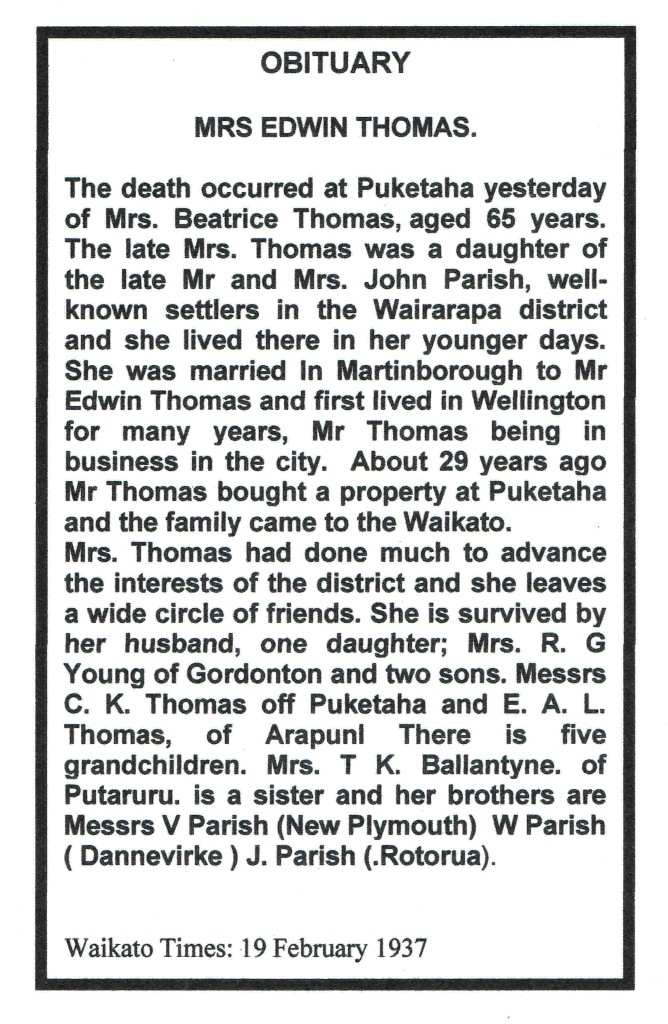
As a relief from the hard physical everyday work and because of their interest in people, Beatrice and Edwin Thomas were very active in the community. Following their example, Ivy and Clarence were also very keen to be involved in district matters. From the time of the first organisation this has included many years service on School Committee, tennis and Ping Pong club and many other social activities.
The Thomas farm was purchased by Jim Lord in the late 40s and changed hands again in 1958 when the farm was purchased by Mr Robert Nichol, whose daughter Dawn and her husband Brian Kennard sharemilked the farm. The Kennards bought the farm next door owned by Melva and Roy Quigg in 1969 then bought the family block in early 1980s.
The text has been copied from the 1991 Puketaha School anniversary booklet
___________________________________________________________________________
Worster Family
(Puketaha Road)

W. H. Worster purchased 222 acres on Puketaha Road from William O'Neill as a going concern, taking possession in November 1917. Bullocks and sheep were farmed for a number of years before changing to dairying.
The stock brought were 451 ewes, 580 hoggets, 13 rams, 50 cows and calves, 1 bull, 2 dairy cows, 40 mixed cattle, 1 cow, bullocks, 1 hack & 2 horses, complete with harness and chattels included disc and harrows, Konaki, grindstone, pack & saddle, 4 sheets of corrugated iron, arsenic and dip, 1 plough, press, 22 woolpacks, brands, tools, staples, strainer and crosscut saw. The stock and chattels were bought for three thousand and seventeen pounds, fourteen shillings.
On the death of Mr & Mrs Worster the farm was dividedbetween their daughter, Nancy and son Sydney. Nancy and husband Jim Thomson owned the homestead block of 118 acres and the remaining 104 acres was owned by Sydney. The Thomson block is now owned by Malcolm and Judith Smith, and the other block has been divided in smaller units owned by Archie Taylor, David Finlay and Reg Crampto.

